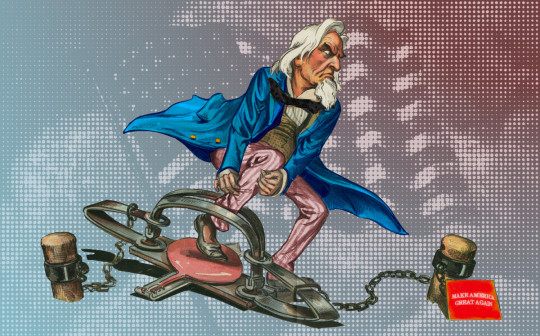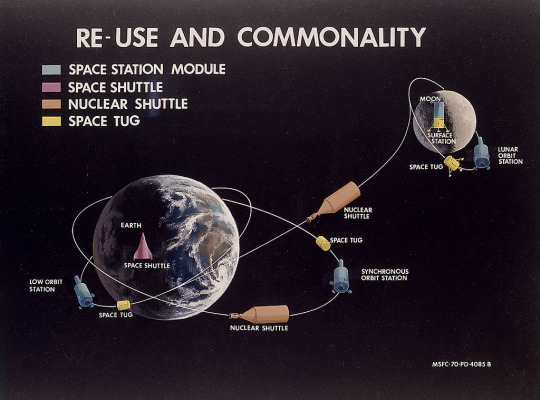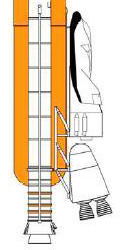#Implement Conditional Formatting
Explore tagged Tumblr posts
Text
Elevate Client Services with Excel: Expert Tips for Financial Consultants by Grayson Garelick

Financial consultants operate in a dynamic environment where precision, efficiency, and client satisfaction are paramount. Excel, as a versatile tool, offers an array of features that can significantly enhance the services provided by financial consultants. Grayson Garelick, an accomplished financial analyst and consultant, shares invaluable Excel tips to help financial consultants elevate their client services and add tangible value.
The Role of Excel in Financial Consulting
Excel serves as the backbone of financial consulting, enabling consultants to analyze data, create models, and generate insights that drive informed decision-making. As the demands of clients become increasingly complex, mastering Excel becomes essential for financial consultants aiming to deliver exceptional services.
1. Customize Excel Templates
One of the most effective ways to streamline workflows and improve efficiency is by creating customized Excel templates tailored to specific client needs. Grayson suggests developing templates for budgeting, forecasting, and financial reporting that can be easily adapted for different clients, saving time and ensuring consistency.
2. Utilize PivotTables for Data Analysis
PivotTables are powerful tools in Excel that allow financial consultants to analyze large datasets and extract meaningful insights quickly. Grayson emphasizes the importance of mastering PivotTables for segmenting data, identifying trends, and presenting information in a clear and concise manner to clients.
3. Implement Conditional Formatting
Conditional formatting is a valuable feature in Excel that allows consultants to highlight important information and identify outliers effortlessly. By setting up conditional formatting rules, consultants can draw attention to key metrics, discrepancies, or trends, facilitating easier interpretation of data by clients.
4. Leverage Excel Add-ins
Excel offers a variety of add-ins that extend its functionality and provide additional features tailored to financial analysis and reporting. Grayson recommends exploring add-ins such as Power Query, Power Pivot, and Solver to enhance data manipulation, modeling, and optimization capabilities.
5. Automate Repetitive Tasks with Macros
Macros enable financial consultants to automate repetitive tasks and streamline workflows, saving valuable time and reducing the risk of errors. Grayson advises recording and editing macros to automate tasks such as data entry, formatting, and report generation, allowing consultants to focus on value-added activities.
6. Master Advanced Formulas and Functions
Excel's extensive library of formulas and functions offers endless possibilities for financial analysis and modeling. Grayson suggests mastering advanced formulas such as VLOOKUP, INDEX-MATCH, and array formulas to perform complex calculations, manipulate data, and create sophisticated models tailored to client needs.
7. Visualize Data with Charts and Graphs
Visualizing data is essential for conveying complex information in an easily digestible format. Excel offers a variety of chart types and customization options that enable consultants to create compelling visuals that resonate with clients. Grayson recommends experimenting with different chart styles to find the most effective way to present data and insights.
8. Collaborate and Share Workbooks Online
Excel's collaboration features enable financial consultants to work seamlessly with clients, colleagues, and stakeholders in real-time. Grayson highlights the benefits of sharing workbooks via OneDrive or SharePoint, allowing multiple users to collaborate on the same document, track changes, and maintain version control.
9. Protect Sensitive Data with Security Features
Data security is a top priority for financial consultants handling sensitive client information. Excel's built-in security features, such as password protection and encryption, help safeguard confidential data and ensure compliance with regulatory requirements. Grayson advises implementing security protocols to protect client data and maintain trust.
10. Stay Updated with Excel Training and Certification
Excel is a constantly evolving tool, with new features and updates released regularly. Grayson stresses the importance of staying updated with the latest Excel training and certification programs to enhance skills, explore new capabilities, and maintain proficiency in Excel's ever-changing landscape.
Elevating Client Services with Excel Mastery
Excel serves as a catalyst for innovation and excellence in financial consulting, empowering consultants to deliver exceptional services that add tangible value to clients. By implementing Grayson Garelick Excel tips, financial consultants can streamline workflows, enhance data analysis capabilities, and foster collaboration, ultimately driving client satisfaction and success. As financial consulting continues to evolve, mastering Excel remains a cornerstone of excellence, enabling consultants to thrive in a competitive landscape and exceed client expectations.
#Financial Consulting#grayson garelick#Customize Excel Templates#Utilize PivotTables#Implement Conditional Formatting#Leverage Excel Add-ins#Automate Repetitive Tasks with Macros#Advanced Formulas and Functions#Visualize Data with Charts and Graphs#Collaborate and Share Workbooks#Protect Sensitive Data with Security#Stay Updated with Excel Training#Elevating Client Services with Excel
3 notes
·
View notes
Text
Bet you didn’t think a cute little baby goat like me, resting beneath a black walnut tree to escape the summer sun, would be proficient in Microsoft Excel, did you. Bet you didn’t expect me to know how to optimize a spreadsheet by implementing conditional formatting rules huh. Bet you took one look at me and thought “no way this kid knows how to use the VLOOKUP function.” Well guess what, I do. I know a diverse array of useful formulas and my body is capable of digesting poison ivy. I eat that shit like potato chips. Get the fuck out of my paddock
30K notes
·
View notes
Text
“That Makes Me Smart”

If you'd like an essay-formatted version of this post to read or share, here's a link to it on pluralistic.net, my surveillance-free, ad-free, tracker-free blog:
https://pluralistic.net/2024/12/04/its-not-a-lie/#its-a-premature-truth

The Biden administration disappointed, frustrated and enraged in so many ways, including abetting a genocide – but one consistent bright spot over the past four years was the unseen-for-generations frontal assault on corporate power and corporate corruption.
The three words that define this battle above all others are "unfair and deceptive" – words that appear in Section 5 of the Federal Trade Commission Act and other legislation modeled on it, like USC40 Section 41712(a), which gives the Department of Transportation the power to ban "unfair and deceptive" practices as well:
https://pluralistic.net/2023/01/10/the-courage-to-govern/#whos-in-charge
When Congress created an agency to punish "unfair and deceptive" conduct, they were saying to the American people, "You have a right not to be cheated." While this may sound obvious, it's hardly how the world works.
To get a sense of how many ripoffs are part of our daily lives, let's take a little tour of the ways that the FTC and other agencies have used the "unfair and deceptive" standard to defend you over the past four years. Take Amazon Prime: Amazon executives emailed one another, openly admitting that in their user tests, the public was consistently fooled by Amazon's "get free shipping with Prime" dialog boxes, thinking they were signing up for free shipping and not understanding that they were actually signing up to send the company $140/year. They had tested other versions of the signup workflow that users were able to correctly interpret, but they decided to go with the confusing version because it made them more money:
https://arstechnica.com/tech-policy/2024/05/amazon-execs-may-be-personally-liable-for-tricking-users-into-prime-sign-ups/
Getting you signed up for Prime isn't just a matter of taking $140 out of your pocket once – because while Amazon has produced a greased slide that whisks you into a recurring Prime subscription, the process for canceling that recurring payment is more like a greased pole you must climb to escape the Prime pit. This is typical of many services, where signing up happens in a couple clicks, but canceling is a Kafkaesque nightmare. The FTC decided that this was an "unfair and deceptive" business practice and used its authority to create a "Click to Cancel" rule that says businesses have to make it as easy to cancel a recurring payment as it was to sign up for it:
https://www.theregister.com/2023/07/12/ftc_cancel_subscriptions/
Once businesses have you locked in, they also spy on you, ingesting masses of commercial surveillance data that you "consented" to by buying a car, or clicking to a website, or installing an app, or just physically existing in space. They use this to implement "surveillance pricing," raising prices based on their estimation of your desperation. Uber got caught doing this a decade ago, raising the price of taxi rides for users whose batteries were about to die, but these days, everyone's in on the game. For example, McDonald's has invested in a company that spies on your finances to determine when your payday is, and then raises the price of your usual breakfast sandwich by a dollar the day you get paid:
https://pluralistic.net/2024/06/05/your-price-named/#privacy-first-again
Everything about this is "unfair and deceptive" – from switching prices the second you click into the store to the sham of consent that consists of, say, picking up your tickets to a show and being ordered to download an app that comes with 20,000 words of terms and conditions that allows the company that sends you a QR code to spy on you for the rest of your life in any way they can and sell the data to anyone who'll buy it.
As bad as it is to be trapped in an abusive relationship as a shopper, it's a million times worse to be trapped as a worker. One in 18 American workers is under a noncompete "agreement" that makes it illegal for you to change jobs and work for someone else in the same industry. The vast majority of these workers are in low-waged food-service jobs. The primary use of the American noncompete is to stop the cashier at Wendy's from getting an extra $0.25/hour by taking a job at McDonald's.
Noncompetes are shrouded in a fog of easily dispelled bossly bullshit: claims that noncompetes raise wages (empirically, this is untrue), or that they enable "IP"-intensive industries to grow by protecting their trade secrets. This claim is such bullshit: you can tell by the fact that noncompetes are banned under California's state constitution and yet the most IP-intensive industries have attracted hundreds of billions – if not trillions – in investment capital even though none of their workforce can be bound under a noncompete. The FTC's order banning noncompetes for every worker in America simply brings the labor regime that created Silicon Valley and Hollywood to the rest of the country:
https://pluralistic.net/2023/10/26/hit-with-a-brick/#graceful-failure
Noncompetes aren't the only "unfair and deceptive" practice used against American workers. The past decade has seen the rise of private equity consolidation in several low-waged industries, like pet grooming. The new owners of every pet grooming salon within 20 miles of your house haven't just slashed workers' wages, they've also cooked up a scheme that lets them charge workers thousands of dollars if they quit these shitty jobs. This scheme is called a "training repayment agreement provision" (TRAP!): workers who are TRAPped at Petsmart are made to work doing menial jobs like sweeping up the floor for three to four weeks. Petsmart calls this "training," and values it at $5,500. If you quit your pet grooming job in the next two years, you legally owe PetSmart $5,500 to "repay" them for the training:
https://pluralistic.net/2022/08/04/its-a-trap/#a-little-on-the-nose
Workers are also subjected to "unfair and deceptive" bossware: "AI" tools sold to bosses that claim they can sort good workers from bad, but actually serve as random-number generators that penalize workers in arbitrary, life-destroying ways:
https://pluralistic.net/2024/11/26/hawtch-hawtch/#you-treasure-what-you-measure
Some of the most "unfair and deceptive" conduct we endure happens in shadowy corners of industry, where obscure middlemen help consolidated industries raise prices and pick your pocket. All the meat you buy in the grocery store comes from a cartel of processing and packing companies that all subscribe to the same "price consulting" services that tells them how to coordinate across-the-board price rises (tell me again how greedflation isn't a thing?):
https://pluralistic.net/2023/10/04/dont-let-your-meat-loaf/#meaty-beaty-big-and-bouncy
It's not just food, it's all of Maslow's Hierarchy of Needs. Take shelter: the highly consolidated landlord industry uses apps like Realpage to coordinate rental price hikes, turning the housing crisis into a housing emergency:
https://pluralistic.net/2024/07/24/gouging-the-all-seeing-eye/#i-spy
And of course, health is the most "unfair and deceptive" industry of all. Useless middlemen like "Pharmacy Benefit Managers" ("a spreadsheet with political power" -Matt Stoller) coordinate massive price-hikes in the drugs you need to stay alive, which is why Americans pay substantially more for medicine than anyone else in the world, even as the US government spends more than any other to fund pharma research, using public money:
https://pluralistic.net/2024/09/23/shield-of-boringness/#some-men-rob-you-with-a-fountain-pen
It's not just drugs: every piece of equipment – think hospital beds and nuclear medicine machines – as well as all the consumables – from bandages to saline – at your local hospital runs through a cartel of "Group Purchasing Organizations" that do for hospital equipment what PBMs do for medicine:
https://pluralistic.net/2021/09/27/lethal-dysfunction/#luxury-bones
For the past four years, we've lived in an America where a substantial portion of the administrative state went to war every day to stamp out unfair and deceptive practices. It's still happening: yesterday, the CFPB (which Musk has vowed to shut down) proposed a new rule that would ban the entire data brokerage industry, who nonconsensually harvest information about every American, and package it up into categories like "teenagers from red states seeking abortions" and "military service personnel with gambling habits" and "seniors with dementia" and sell this to marketers, stalkers, foreign governments and anyone else with a credit-card:
https://www.consumerfinance.gov/about-us/newsroom/cfpb-proposes-rule-to-stop-data-brokers-from-selling-sensitive-personal-data-to-scammers-stalkers-and-spies/
And on the same day, the FTC banned the location brokers who spy on your every movement and sell your past and present location, again, to marketers, stalkers, foreign governments and anyone with a credit card:
https://www.404media.co/ftc-bans-location-data-company-that-powers-the-surveillance-ecosystem/
These are tantalizing previews of a better life for every American, one in which the rule is, "play fair." That's not the world that Trump and his allies want to build. Their motto isn't "cheaters never prosper" – it's "caveat emptor," let the buyer beware.
Remember the 2016 debate where Clinton accused Trump of cheating on his taxes and he admitted to it, saying "That makes me smart?" Trumpism is the movement of "that makes me smart" life, where if you get scammed, that's your own damned fault. Sorry, loser, you lost.
Nowhere do you see this more than in cryptocurrencyland, so it's not a coincidence that tens – perhaps hundreds – in dark crypto money was flushed into the election, first to overpower Democratic primaries and kick out Dem legislators who'd used their power to fight the "unfair and deceptive" crowd:
https://www.politico.com/newsletters/california-playbook-pm/2024/02/13/crypto-comes-for-katie-porter-00141261
And then to fight Dems across the board (even the Dems whose primary victories were funded by dark crypto money) and elect the GOP as the party of "caveat emptor"/"that makes me smart":
https://www.coindesk.com/news-analysis/2024/12/02/crypto-cash-fueled-53-members-of-the-next-u-s-congress
Crypto epitomizes the caveat emptor economy. By design, fraudulent crypto transactions can't be reversed. If you get suckered, that's canonically a you problem. And boy oh boy, do crypto users get suckered (including and especially those who buy Trump's shitcoins):
https://www.web3isgoinggreat.com/
And for crypto users who get ripped off because they've parked their "money" in an online wallet, there's no sympathy, just "not your keys, not your coins":
https://www.ledger.com/academy/not-your-keys-not-your-coins-why-it-matters
A cornerstone of the "unfair and deceptive" world is that only suckers – that is, outsiders, marks and little people – have to endure consequences when they get rooked. When insiders get ripped off, all principle is jettisoned. So it's not surprising that when crypto insiders got taken for millions the first time they created a DAO, they tore up all the rules of the crypto world and gave themselves the mulligan that none of the rest of us are entitled to in cryptoland:
https://blog.ethereum.org/2016/07/20/hard-fork-completed
Where you find crypto, you find Elon Musk, the guy who epitomizes caveat emptor thinking. This is a guy who has lied to drivers to get them to buy Teslas by promising "full self driving in one year," every year, since 2015:
https://www.consumerreports.org/cars/autonomous-driving/timeline-of-tesla-self-driving-aspirations-a9686689375/
Musk told investors that he had a "prototype" autonomous robot that could replace their workers, then demoed a guy in a robot suit, pretending to be a robot:
https://gizmodo.com/elon-musk-unveils-his-funniest-vaporware-yet-1847523016
Then Musk did it again, two years later, demoing a remote-control robot while lying and claiming that it was autonomous:
https://techcrunch.com/2024/10/14/tesla-optimus-bots-were-controlled-by-humans-during-the-we-robot-event
This is entirely typical of the AI sector, in which "AIs" are revealed, over and over, to be low-waged workers pretending to be robots, so much so that Indian tech industry insiders joke that "AI" stands for "Absent Indians":
https://pluralistic.net/2024/01/29/pay-no-attention/#to-the-little-man-behind-the-curtain
Musk's view is that he's not a liar, merely a teller of premature truths. Autonomous cars and robots are just around the corner (just like the chatbots that can do your job, and not merely convince your boss to fire you while failing to do your job). He's not tricking you, he's just faking it until he makes it. It's not a scam, it's inspirational. Of course, if he's wrong and you are scammed, well, that's a you problem. Caveat emptor. That makes him smart.
Musk does this all the time. Take the Twitter blue tick, originally conceived of as a way to keep Twitter users from being scammed ("unfair and deceptive") by con artists pretending to be famous people. Musk's inaugural act at Twitter was to take away blue ticks from verified users and sell them to anyone who'd pay $8/month. Almost no one coughed up for this – the main exception being scammers, who used their purchased, unverified blue ticks to steal from Twitter users ("that makes me smart").
As Twitter hemorrhaged advertising revenue and Musk became increasingly desperate to materialize an army of $8/month paid subscribers, he pulled another scam: he nonconsensually applied blue ticks to prominent accounts, in a bid to trick normies into thinking that widely read people valued blue ticks so much they were paying for them out of their own pockets:
https://www.bbc.com/news/technology-65365366
If you were tricked into buying a blue tick on this pretense, well, caveat emptor. Besides, it's not a lie, it's a premature truth. Someday all those widely read users with nonconsensual blue ticks will surely value them so highly that they do start to pay for them. And if they don't? Well, Musk got your $8: "that makes me smart."
Scammers will always tell you that they're not lying to you, merely telling premature truths. Sam Bankman-Fried's defenders will tell you that he didn't actually steal all those billions. He gambled them on a bet that (sorta-kinda) paid off. Eventually, he was able to make all his victims (sorta-kinda) whole, so it's not even a theft:
https://www.cnn.com/2024/05/08/business/ftx-bankruptcy-plan-repay-creditors/index.html
Likewise, Tether, a "stablecoin" that was unable to pass an audit for many years as it issued unbacked, unregulated securities while lying and saying that for every dollar they minted, they had a dollar in reserves. Tether now (maybe) has reserves to equal its outstanding coins, so obviously all those years where they made false claims, they weren't lying, merely telling a premature truth:
https://creators.spotify.com/pod/show/cryptocriticscorner/episodes/Tether-wins–Skeptics-lose-the-end-of-an-era-e2rhf5e
If Tether had failed a margin call during those years and you'd lost everything, well, caveat emptor. The Tether insiders were always insulated from that risk, and that's all that matters: "that makes me smart."
When I think about the next four years, this is how I frame it: the victory of "that makes me smart" over "fairness and truth."
For years, progressives have pointed out the right's hypocrisy, despite that fact that Americans have been conditioned to be so cynical that even the rankest hypocrisy doesn't register. But "caveat emptor?" That isn't just someone else's bad belief or low ethics: it's the way that your life is materially, significantly worsened. The Biden administration – divided between corporate Dems and the Warren/Sanders wing that went to war on "unfair and deceptive" – was ashamed and nearly silent on its groundbreaking work fighting for fairness and honesty. That was a titanic mistake.
Americans may not care about hypocrisy, but they really care about being stolen from. No one wants to be a sucker.
#tether#ftx#scams#trumpism#caveat emptor#cryptocurrency#twitter#sleaze#premature truths#bossware#pluralistic
374 notes
·
View notes
Text
Hermitcraft Guide: Transcript/accessible version

Hermitcraft is a vanilla style* multiplayer server that has been running in a season format since 2012. Each season, the players move to a new world and start anew, meaning now’s the perfect time to start watching!
The server is invite only, and new people can join only when the existing Hermits unanimously agree that they would be a good fit. The Hermits have regular meetings to discuss new ideas and any concerns.
I don’t recommend watching every episode by every Hermit. There’s shows like HermitCraft Recap to keep you up to date! Don’t feel obligated to watch everything, just have fun!
* the server is mostly unmodded, but in recent seasons, the Hermits have been implementing custom items and texture packs for the sake of storytelling
Individual hermit descriptions under the cut
Descriptions are all edited by myself, with some contributions from other people :)

Hermit: BdoubleO100
Quote: “Axe wielding maniac, that’s me!”
Flags: USA
Description: Bdubs is a master at using unconventional blocks in his highly detailed builds.
It’s a point of pride to always be the one to sleep and skip the night before the others can.
He’s often teased about his height despite not being the shortest Hermit.

Hermit: Cubfan135
Quote: “There is redstone back there… Basically, it does stuff.”
Flags: USA
Description: Cub is really good at basically every aspect of Minecraft, and always goes big in his projects. With Scar, he created a capitalistic empire and then decided he didn’t care for industry afterward, since he had already won. Cub then became a freeloading basement dweller. He enjoys confusing other people with strange antics.

Hermit: Docm77
Quote: “We will crush them with our redstone spaghetti”
Flags: Germany
Description: A bit of an intense guy, Doc is unafraid to play the scary villain. Don’t let that fool you – he’s a big softie. His Twitter is 50% “hey who wants to see the game-breaking death machine I built” and 50% about his adorable kid, nicknamed “Doccy”
His arm was canonically destroyed by the Minecraft dev Dinnerbone back in 2013.
[Desciption provided by anon]

Hermit: Ethoslab
Quote: “Xisuma is okay with pretty much everything I do if he doesn’t find out about it.”
Flags: Canada
Description: Etho is a Minecraft O.G. and the creator of many of the redstone designs that everyone uses. He’s a very dedicated player with an unconventional style, and the other Hermits are a bit obsessed with him. He’s your favourite YouTuber’s favourite YouTuber. And there’s a reason for that.

Hermit: FalseSymmetry
Quote: The Queen of Hearts, Heads and Body Parts
Flags: United Kingdom
Description: Very approachable and friendly, but has a reputation for her confidence in PVP. False works on very large, thematically strong builds. She was the first Minecraft Championship participant to achieve multiple consecutive wins.

Hermit: Geminitay
Quote: “How am I supposed to Live Laugh Love in these conditions!?”
Flags: Canada, Bisexual
Description: Gem is a talented builder with an appreciation of cute aesthetics that’s matched only by her thirst for blood. She’s truly earned the descriptor “Geminislay.”
She joined in season 8, and has effectively struck fear into the hearts of the other Hermits, particularly Etho, despite her wholesome personality.

Hermit: Grian
Quote: “Not everything I do has to start a war, okay? Sometimes I just want to start a society of sewer mole people.”
Flags: United Kingdom
Description: Grian always builds big and pranks bigger. He delights in nothing less than being a public nuisance. This starts (good-natured) wars within the server repeatedly.
He’s very social, but is basically glued to Mumbo and Scar. Infamously never bothers with the backs of his builds.

Hermit: Impulse SV
Quote: "I hate being bad at stuff!"
Flags: USA
Description: Impulse gets a reputation for being super nice all the time but he will hold a grudge forever.
He once moved his entire base up by one block because he thought it would make it look better (it did)
One season he ate crystals.
[Description provided by sudden-memory-loss]

Hermit: Hypnotizd
Quote: “And then I found an enderchest here, it’s got a lot of good stuff in it!”
Flags: USA
Description: Hypno's one of the more reserved Hermits, sticking to himself (+ bothering xB and Jevin). He's extremely laid-back and has a little bit of a deadpan silly sense of humor. He’s a very observant guy who builds geometric and rustic creations. His post-annotated runs of the minigame Decked Out 2 are great if you want to see someone actively break down how they play!
[Description provided by anon]

Hermit: Iskall85
Quote: “Let’s not end it on a goodbye, let’s end it on a Hallo”
Flags: Sweden
Description: A hardworking builder and redstone engineer. Loves making minigames, most of which revolve around gambling. Iskall is a dedicated hater of diorite blocks. Creator of the Vault Hunters modpack and server(s), which he has spent most his time playing recently.

Hermit: JoeHills
Quote: “Sufficiently advanced bothering-each-other is indistinguishable from teamwork”
Flags: USA
Description: Joe is a strange person, and his brand of absurdity cannot easily be put into words. He typically ends his videos with a poem or strange moral. Joe makes funny low energy videos, perfect for those who want to watch something laid-back.

Hermit: iJevin
Quote: “It’s actually pretty straightforward and almost easy. Sometimes.”
Flags: USA
Description: Unashamed. Just in general. A real hard worker who’s willing to destroy a massive project and start over. This commitment carries over into prank wars, which escalate to truly ludicrous heights.

Hermit: Keralis
Quote: “Let’s take the Black Death. I like the sound of that.”
Flags: Sweden, Poland
Description: Keralis favours modern, industrial-styled builds that carry the impression of wealth and prestige. His creations always have a strong sense of life to them. Keralis has a habit of referring to the others with silly nicknames such as “Shashwammy” and “Bubbles”,

Hermit: PearlescentMoon
Quote: “Yeah, I’m a little suspicious of myself to be honest.”
Flags: Australia
Description: Pearl is perhaps one of the best builders in all of MCYT. Her works are awe-inspiring in scale, but really shine in their details. A long-time friend of Grian, she joined HC in season 8 and fits right in, with a unique energy that’s full of fun. She is always up for a light bit of pranking or teasing, with unstoppable chaotic energy when she’s up at 5am for events.
[Description provided by cerealisafunbath and anon]

Hermit: Mumbo Jumbo
Quote: “If I forget, slap me. With a cold, vegan fishcake”
Flags: United Kingdom
Description: Mumbo is best known for his eccentric redstone creations. He’s sometimes too ambitious for his own good – his ideas blow up in his face at the worst possible moments. He’s got a lovable awkward energy and strange, extremely British mannerisms.

Hermit: GoodTimesWithScar
Quote: “A laugh is worth far more than a diamond.”
Flags: USA
Description: Scar’s building skills and storytelling will make believe in magic and want to see what he’ll do next. Scar can pull pranks and act the villain as good as anyone else on Hermitcraft, but no matter what role Scar is playing, you will have a good time. He’s banned from Canada, so he banned the nation of Canada from his theme park.
Scar IRL has a chronic disease that he’s very open about, and uses a wheelchair. Check out his day in the life videos!
[Description provided by anon]

Hermit: Rendog
Quote: “Have a lovely day warmbloods, I’m off to sharpen my bones.”
Flags: United Kingdom, South Africa
Description: Ren is the hermit most likely to jump in to some over-the-top storytelling, mixing it with his regular content for some impressive arcs. He’s played a lot of roles, from mind-controlled business tycoon to time travelling hippie.

Hermit: StressMonster101
Quote: “Come and chase me boys! I’m going to murder you!”
Flags: United Kingdom
Description: Stress is known for describing everything she loves as “gorgeous!” It’s definitely her catchphrase.
She uses a lot of pink and purple, and loves bright fantasy aesthetics. She’s closest with Iskall, who she will bother at every opportunity.

Hermit: Tango Tek
Quote: “Would I put a tu-tu on my Fifi? Come on!”
Flags: USA
Description: Tango is the creator of the in-Minecraft minigame Decked-Out, which everyone on the server is obsessed with. He’s a lover of all things dramatic and explosive. Tango is hungry for feedback and improvement, and values honesty about his work. World's best minigame creator and world's worst minigame player. Master of making strange noises.
[Desciption provided by sudden-memory-loss]

Hermit: VintageBeef
Quote: “I respectfully decline your creepy ways.”
Flags: Canada
Description: Beef is the most enthusiastic user of the mechanic that allows players to make massive builds into tiny map-based pixel art. He uses this for a lot of different purposes, from wallpaper to custom card games. It takes a lot of dedication, which he has in spades. He's oblivious in the best way possible. He’s walking in circles, he’s misplacing items, he’s having fun.
[Description provided by two anonymous contributors]

Hermit: WelsKnight
Quote: “I’ve got a fever and the only prescription is trading card games.”
Flags: USA
Description: As his name suggests, Wels (knight) has a strong interest in medieval aesthetics, which he uses heavily in his builds. He’s also recorded sea shanties. Former paralegal and court reporter for the US army.

Hermit: xBCrafted
Quote: “Awwww yeah!”
Flags: USA
Description: xB posts often, about two or three times a week. His videos always go over his thought process a lot more than anyone else. His builds have a strong focus on environmental storytelling.

Hermit: XisumaVoid
Quote: “I’ve got derp on the mind”
Flags: United Kingdom
Description: Xisuma tends to pick a theme for his big projects and always wears a matching costume. He describes himself as a big derp, and no one agrees on how to pronounce his name.
He doesn’t reset his episode number each season, so he’ll be starting season 10 with episode #1128! Xisuma is the server’s admin, which is a big responsibility without the powertrip due to the Hermits’ commitment to group decision making.

Hermit: ZombieCleo
Quote: "I'll break you legs"
Flags: United Kingdom, Bisexual. Cleo uses She/They pronouns, but I do not know if they identify as nonbinary.
Description: Cleo enjoys detail work, being the number-one user of the posable armour stand tweak, which she uses to make dioramas and statues. They have a rather dry, mature sense of humour. Formerly a schoolteacher. Cleo is close friends with Joe, and the two regularly stream activities such as crafting together

Hermit: Zedaph Plays
Quote: “Is this a bad idea? Yes. Am I gonna do it anyway? Yes.”
Flags: United Kingdom
Description: Focuses more on making his own fun than on traditional builds. Zedaph is the human embodiment of an explosion happening in another room and hearing someone yell out "it's fine!". A very polite and confusing mad scientist. He does the wildest things just because he can. His editing style is fun and creative, featuring stop-motion montages.
[Description provided by sudden-memory-loss and anon]
New hermits:

Hermit: Smallishbeans
Flags: United Kingdom
Description: Joel is a masterful builder and intimidating fighter. Has very sarcastic deadpan humour. He likes to bully everyone affectionately. Married to fellow MCYTber LDshadowlady (Lizzie)

Hermit: Skizzleman
Flags: USA
Description: Skizz is a beacon of positivity and energy. Strong dad energy. He and Impulse have been friends for more than 25 years. Forms a lot of acronym groups with the Hermits (ZITS, GIGS) and comes up with nicknames for everyone
_

In Loving Memory of
Hermit: Tinfoil Chef
Flags: USA
Description:
A beloved member of Hermitcraft since season 2, TFC passed in 2022.
“Five blocks at a time…
Punctuated with a torch…
Five more once again…
TinfoilChef worked at his own
speed, in his own way…
May we all remember him
in our own ways by striving…
to live unhurried by unwarranted comparisons to those around
and bring joy to others
making the art we want to create.”
[Poem by an anonymous Hermit, likely Joe]
Thank you for reading!
156 notes
·
View notes
Text
PROGRAMMING MISCONCEPTIONS
Trigger warning for discussions of programming and RAMCOA. CLOCKING Clocking is not a real thing. It's arguably one of the stupidest things I've heard of in this community. I don't blame people for believing it, paranoia is understandable, but I absolutely do blame the person who chose to spread that misinformation in the first place. It operates under the assumption that everyone comes from similar groups with similar hierarchies, which is just not true. There is no possible way for someone from a completely different group with a completely different structure to tell your rank or anything about your group just by looking at you. What is possible is identifying dissociative traits and trauma responses as well as potentially attire matching specific groups, if you are still involved with your group. Even this would take some level of practice and familiarity with the individual, you probably can't tell some random stranger in the grocery store is traumatized and dissociative just by looking at them, the same is true for anyone else. INTERNET PROGRAMMING You can't be programmed over the internet. You just can't. Programming requires someone in person torturing you and causing you to dissociate, this is not possible virtually. Programming takes a degree of control and torture that is just not possible over the internet. What is possible, and what is probably being mistaken for programming over the internet, is virtual manipulation and grooming. PROGRAMMING OUTSIDE OF A GROUP Programming is inherently organized because of the nature of the abuse, there need to be multiple people to reinforce the abuse. If only one person were involved it would fall apart from not enough reinforcement and exposure to cues. Even if there aren't many active abusers, there have to be people complicit in the abuse and allowing it to occur. Programming groups typically have multiple victims as well, it's very unlikely that they just suddenly decided to program only one child one day. What can happen outside of a group setting is conditioning, which is frequently mistaken for programming. For more details, see this post. SCRIPTING Scripts have to be implemented very early on, and it's very hard to implement a script. Most programming survivors will not have scripts. It's also unlikely to have multiple scripts, as they would get confused very easily. I also dislike the term "miniscript", as it's still a script even if it only affects one part of the system. What commonly gets confused for scripting is forced introjection, where alters are forcibly introjected as certain characters. Scripting involves molding the innerworld and programming around the media, forced introjection does not. PROGRAMMING AFTER THE AGE OF OSDDID FORMATION The entire purpose of programming is to create dissociative states in the individual, this cannot occur past the age of OSDDID formation. What can happen past the age of system formation is someone manipulating and abusing you, which can cause further splitting, but this would not be programming as it doesn't have to do with the formation of your system. To my knowledge, programming has to do with the actual creation of the system, not just causing someone to split. I am a bit uncertain about this, so correct me if I'm wrong. DEPROGRAMMING You cannot be deprogrammed without a lot of internal work. You have to put in a lot of work yourself and with a reputable therapist to effectively deprogram. It isn't something that happens overnight, and it's not something that can be done to you if you aren't ready, and you have to be in a safe and stable environment in order to effectively deprogram. PROGRAMMING ONLY OCCURRING A FEW TIMES In order for programming to be actually effective, it has to occur repeatedly on a regular basis. It cannot happen just a couple of times. This isn't to say it has to be constantly occurring, but it has to be semi-regular and reinforced via activation of cues. If it happened infrequently, it would be much less likely to cause dissociation. - C-004-2
#did osdd#osdd did#did system#osdd system#actually dissociative#osddid#programmed system#ramcoa survivor#ramcoa#dissociative identity disorder#other specified dissociative disorder#did#actually did#c did#complex did#programmed did#did alter#osdd#didosdd#traumagenic system#trauma therapy#trauma based mind control#trauma survivor#trauma#childhood trauma#ptsd#trauma response#complex ptsd#abuse survivor#did alters
89 notes
·
View notes
Text
Everything is controlled and made to be from your consciousness. Things 8888years away are affected by it. The immediate seeming reality is too. Literally whatever you think and decide and believe is changed the absolute second you even think or use your consciousness. Truly decide and live as though and just like everything all seeming matter takes forth and changes right away, even billions and eons miles away. EVERYTHING you actually think is externalized. Everything you truly believe is MADE and created; the ideal or not the ideal. You can think ANYTHING.
And you know Everything is feeding off right now. Even the idea of past and future. The idea of past and future was probably implemented for a reason. Now is feeding into everything in every direction. Like the snake eating itself and the cosmic egg. Now spans out into everything because there only is right now and right now is the formation of all.
If you’re not what you want it’s because that’s truly your NOW!! and has been. That’s because that’s what you’re THINKING and creating!!!! Let the “desire” you have turn into the love and appreciation of being. The “desire” is mistaken for longing when it’s just seeking embodiment. EMBODIMENT. BE IT. If you’re “not the ideal” It’s because that’s what you’re imagining and thus creating. The sub plane of your conditioned mind is holding back. This is why we see ourselves as we want and it is given, even when people believe they’re making progress through efforts in study or gym or Neville etc. Truly; it’s the belief held in the mind. The creation and awareness from consciousness. So, It already is. And it’s given. It already is and it’s given with good bad medium almost or anything because we only have whatever it is you’re saying it is. How you see yourself today is given and that’s it. Anyone with whatever method they chose to believe worked because their now was the truth and was fed out into everything.
Your NOW is not the ideal? That’s all there is and that NOW belief and conscious awareness is the beginning and the end if there was any beginning, because really NOW is all there is. Anything of existence is span out and created from NOW. Conscious awareness of anything is created. That’s why you are stuck with whatever it is you’re consciously aware of.
What you decree - is then made to be
27 notes
·
View notes
Text

DUNE scientists observe first neutrinos with prototype detector at Fermilab
Symmetry magazine,
The prototype of a novel particle detection system for the international Deep Underground Neutrino Experiment successfully recorded its first accelerator neutrinos.
In a major step for the international Deep Underground Neutrino Experiment, scientists have detected the first neutrinos using a DUNE prototype particle detector at the US Department of Energy’s Fermi National Accelerator Laboratory.
DUNE, currently under construction, will be the most comprehensive neutrino experiment in the world. It will bring scientists closer to solving some of the biggest physics mysteries in the universe, including searching for the origin of matter and learning more about supernovae and black hole formation.

Display of a candidate neutrino interaction recorded by the 2×2 detector highlighting the four internal detector modules and native 3D imaging capability. The bottom image additionally shows the detectors surrounding the 2×2 for further tracking of incoming and exiting particles. The DUNE Near Detector will similarly consist of a modular liquid argon detector along with a muon tracker.
Courtesy of DUNE Collaboration
Since DUNE will feature new designs and technology, scientists are testing prototype equipment and components in preparation for the final detector installation. In February, the DUNE team finished the installation of their latest prototype detector in the path of an existing neutrino beamline at Fermilab. On July 10, the team announced that they successfully recorded their first accelerator-produced neutrinos in the prototype detector, a step toward validating the design.
“This is a truly momentous milestone demonstrating the potential of this technology,” says Louise Suter, a Fermilab scientist who coordinated the module installation. “It is fantastic to see this validation of the hard work put into designing, building and installing the detector.”
The new neutrino detection system is part of the plan for DUNE’s near detector complex that will be built on the Fermilab site. Its prototype—known as the 2×2 prototype because it has four modules arranged in a square—records particle tracks with liquid argon time projection chambers. The final version of the DUNE near detector will feature 35 liquid argon modules, each larger than those in the prototype. The modules will help navigate the enormous flux of neutrinos expected at the near site.
The 2×2 prototype implements novel technologies that enable a new regime of detailed, cutting-edge neutrino imaging to handle the unique conditions in DUNE. It has a millimeter-sized pixel readout system, developed by a team at DOE’s Lawrence Berkeley National Laboratory, that allows for high-precision 3D imaging on a large scale. This, coupled with its modular design, sets the prototype apart from previous neutrino detectors like ICARUS and MicroBooNE.
Now, the 2×2 prototype provides the first accelerator-neutrino data to be analyzed by the DUNE collaboration.
DUNE is split between two locations hundreds of miles apart: a beam of neutrinos originating at Fermilab, close to Chicago, will pass through a particle detector located on the Fermilab site, then travel 800 miles through the ground to huge detectors at the Sanford Underground Research Facility in South Dakota.
The DUNE detector at Fermilab will analyze the neutrino beam close to its origin, where the beam is extremely intense. Collaborators expect this near detector to record about 50 interactions per pulse, which will come every second, amounting to hundreds of millions of neutrino detections over DUNE’s many expected years of operation. Scientists will also use DUNE to study neutrinos’ antimatter counterpart, antineutrinos.
This unprecedented flux of accelerator-made neutrinos and antineutrinos will enable DUNE’s ambitious science goals: Physicists will study the particles with DUNE’s near and far detectors to learn more about how they change type as they travel, a phenomenon known as neutrino oscillation. By looking for differences between neutrino oscillations and antineutrino oscillations, physicists will seek evidence for a broken symmetry known as CP violation to determine whether neutrinos might be responsible for the prevalence of matter in our universe.
The DUNE collaboration is made up of more than 1,400 scientists and engineers from over 200 research institutions. Nearly 40 of these institutions work on the near detector. Specifically, hardware development of the 2×2 prototype was led by the University of Bern in Switzerland, DOE’s Fermilab, Berkeley Lab and SLAC National Accelerator Laboratory, with significant contributions from many universities.
“It is wonderful to see the success of the technology we developed to measure neutrinos in such a high-intensity beam,” says Michele Weber, a professor at the University of Bern—where the concept of the modular design was born and where the four modules were assembled and tested—who leads the effort behind the new particle detection system. “A successful demonstration of this technology’s ability to record multiple neutrino interactions simultaneously will pave the way for the construction of the DUNE liquid argon near detector.”
Next steps
Testing the 2×2 prototype is necessary to demonstrate that the innovative design and technology are effective on a large scale to meet the near detector’s requirements. A modular liquid-argon detector capable of detecting high rates of neutrinos and antineutrinos has never been built or tested before.
The existing Fermilab beamline is an ideal place for testing and presents an exciting opportunity for the researchers to measure these mysterious particles. It is currently running in “antineutrino mode,” so DUNE scientists will use the 2×2 prototype to study the interactions between antineutrinos and argon. When antineutrinos hit argon atoms, as they will in the argon-filled near detector, they interact and produce other particles. The prototype will observe what kinds of particles are produced and how often. Studying these antineutrino interactions will prepare scientists to compare neutrino and antineutrino oscillations with DUNE.
“Analyzing this data is a great opportunity for our early-career scientists to gain experience,” says Kevin Wood, the first run coordinator for the 2×2 prototype and a postdoctoral researcher at Berkeley Lab, where the prototype’s novel readout system was developed. “The neutrino interactions imaged by the 2×2 prototype will provide a highly anticipated dataset for our graduate students, postdocs and other young collaborators to analyze as we continue to prepare to bring DUNE online.”
The DUNE collaboration plans to bombard the 2×2 prototype with antineutrinos from the Fermilab beam for several months.
“This is an exciting milestone for the 2×2 team and the entire DUNE collaboration,” says Sergio Bertolucci, professor of physics at the University of Bologna in Italy and co-spokesperson of DUNE with Mary Bishai of Brookhaven National Laboratory. “Let this be the first of many neutrino interactions for DUNE!”
w
#science#space#astronomy#physics#news#nasa#astrophysics#esa#spacetimewithstuartgary#starstuff#spacetime#hubble space telescope#jwst#fermilab
19 notes
·
View notes
Note
Alternate Prompt: Use your Hyrule world-building, something-something comparing marks of your choice?
It's 4 am (bedtime) and I have a 2.5k unedited mess for you! This is set in the same 'verse as Loftwings Stand for Freedom, but kind of before? An alternate timeline. Same sort of backstory, implemented differently. Still not gonna worry about the formatting.
Warnings for offscreen systemic slavery, implied torture, onscreen blood and injury. If this was a separate document I'd title it "trauma dump." :) at a rough PG-13 rating. Is this any good? Idk, it's 4:15 am now. <3
---
Four sat on a log with a stick in his hand, poking the dancing fire and sending little fairy-like sparks fluttering through the evening. His other hand propped up his head, and he tapped his fingers on his cheek, watching everyone else bustle about the new campsite like tired little bees.
The day had been a long one, with several complex fights and a disorienting portal shift that left them in an unknown part of an unknown world. Time and Twilight both thought it could be theirs, but without a few key markers, they couldn't be sure. For now, they were lost in a blank part of the map.
Four himself was resting a chewed-up leg out in front of him, since he'd run out of arrows in the middle of the last fight and couldn't do more than hold his shield up and brace himself when the impact came. He'd refused to be carried after it, but had to lean quite heavily on a tall stick and Wind, who, thank the Golden Three, hadn't been injured at all.
Most of them had been. Hyrule had done what he could, but magic and potions could only go so far—Four's injury had stopped bleeding and the bone had been repaired with a potion, but his bandaged leggings were toast and he could still feel some of the pain. Even now, Warriors chewed out Time while checking on a bandage around his bicep, and Sky helped Wild with a slice on his leg. Wind had passed out against Twilight like an exhausted kitten, and Legend was the only one working on dinner.
Hyrule… hm. Four hadn't seen him in a little while. He'd gone off to clean up or something, and hadn't yet returned. Four stared at the base of the fire, straining his ears, and he heard what sounded like stifled pain somewhere in the woods behind him, somewhere near the river they'd found.
Hyrule probably wouldn't appreciate a visitor, but… maybe he wanted one. Four would happily buzz off if Hyrule told him to, since he wasn't always very good with comfort anyway, but he had decided to try and be a bit more conscious of the others. This was, perhaps, a good opportunity to do the whole practicing-being-a-friend thing.
So Four dropped his fire-poking stick, grabbed his walking-height stick, and pushed himself to his feet.
Legend immediately looked up with narrowed eyes. "Where are you going?"
"To the bathroom," Four hedged. "What, want to come with me?"
After a moment of hesitation, Legend waved with the knife glinting in his hand. "I mostly trust you to not do anything stupid."
"Thanks. I'll be back in a bit." Four rolled his eyes, but used the stick and his uninjured leg to make his slow way into the calming woods. He had to be careful in the dying light, but he'd always had pretty good vision in dusky conditions, so he managed to not trip over any roots or his own feet. His boots crushed fallen leaves and his leg's soft bandages caught on ferns more than once.
Four eventually found Hyrule at the edge of the nearby babbling river, bending over the water with the willows, his tunic and undershirt hanging over a branch nearby. He looked focused on something that Four couldn't see. A single drop of ruby-red blood fell into the moving water and was swept away.
As he limped out of the trees, Four grunted a little, and Hyrule whipped around at the slight sound, hands held up in a guard position. His bare torso was blessedly free of dangerous injuries or any sign of blood.
When he saw it was just Four, he relaxed, and put his right hand over his heart. "Oh, Four," he laughed, somewhat hysterically, "you startled me."
Four began to smile back, relieved that Hyrule wasn't hiding a mortal wound, but his eyes caught on the back of Hyrule's hand. It was unusual for a number of reasons, the foremost being that it was actually uncovered. Hyrule's usual long sleeves attached around his middle finger, and even when he took those off, he always found something else to wrap his hands with. Four could honestly say that he'd never seen the skin on the back of Hyrule's hands. And now he had an inkling why.
Hyrule noticed Four noticing immediately, and put his hand down to hide it, opening his mouth to say something.
"I just wanted to make sure you were okay," Four said, tearing his eyes away from the colors to fix them on Hyrule's face. He noted faint tear lines there. The air felt thick, harder to breathe. "Are you?"
"I… am."
Four nodded and put his weight on the stick as much as he could, which turned him vaguely back the direction he'd come. "Then I'll leave you alone. Sorry."
"You aren't going to ask?" Hyrule said. He held his hands behind his back, and Four didn't like the wary glint in his eyes. He didn't like what it implied.
"No," Four said. "Unless you want me to. Look, I know what a burn scar looks like, and I might think it's a little odd that there's a tattoo on top, but it's not like I got a good look, or know what it could mean, or why you might hide it." He said used such detail so Hyrule would know exactly what Four had seen and what he thought, so he wasn't left wondering in anxiety.
Hyrule's mouth angled in a mixture of guilt and shame, and he glanced back at the river. "I don't think you'd know. But Legend—"
"I won't mention it," Four interrupted. "Like I said. You aren't the only one keeping secrets."
"Even still?" Hyrule half-joked in an attempt to think the air.
"Definitely not."
The viscous silence stretched long enough that Four's good leg began to ache. He shifted, and the movement drew Hyrule's attention back to him.
"Sorry, I should… probably…"
"Do you want to talk about it?" Four asked on impulse.
"I owe you an explanation."
"No, you don't."
"Yes, I do."
"Do you want to explain?"
"Maybe I do!"
"Okay then!" Four rolled his eyes and rubbed at his face. But he'd asked three times, and been answered.
He took a few awkward steps toward the river and dropped down to sitting to get weight off of his legs. He glanced back at Hyrule, who hesitated just a moment longer before joining him. Hyrule lifted his knees and wrapped his arms around them. In the dusk, the few faint lines crisscrossing his bare back stood out more. Four had wondered about those evident whipping scars, of course, but Hyrule wasn't the only one with them. Four himself, Time, Warriors, Legend… They spoke volumes, and still somehow nothing at all.
"You really don't have to say anything," Four said, picking up a rock and turning it over in his fingers so he didn't mess with his bandages or his tunic.
Hyrule exhaled and rested his chin on his knees. He almost smiled. "I know I don't have to. You'd never ask it, would you?"
"I intruded on your privacy."
"I think… I think I was waiting for someone to do that. I don't really…" Hyrule seemed to be struggling for words. "I want someone to know. Don't I? I want everyone to know so I don't have to hide it. All the royal advisors told me to keep it quiet, so I've never really been honest with anyone. I mean, I saw the way everyone else reacted to Twilight, and to you. Maybe I'm selfish for wanting some of that, too."
Four stacked his pebble on another. "I'll listen. You know I will. And I'll keep secrets as best I can, even if I suck a little at it. I'm not very good at this, but I can listen and try to understand."
"That's all I'd ask for. I don't want sympathy, and I don't need worry, and that's maybe the reason I haven't told Legend anything, yet. He'll be upset. I think he's suspicious, anyway."
"You said he'd know what the mark was," Four remembered.
Hyrule nodded, then, as if moving through deep water, he unwrapped his hands from his knees and extended his right hand. The light caught ridges and knuckles. Hyrule held still to allow Four to get a look at the marks on top of his right hand. It didn't escape Four's notice that Hyrule kept his left out of sight, but he didn't comment.
A dark red tattoo in the shape of the bird in the Kingdom of Hyrule's crest spanned the top of his hand, facing the knuckles, and ran over the raised bumps of a clear scar beneath it. The scar was difficult to make out with the tattoo on top, but Four picked out a diamond shape with another symbol that could potentially be a letter. It wasn't detailed, but it sure conveyed enough. A dried smear of blood marked a spot where Hyrule must have been cut in a fight.
Four's hip itched.
"What does it mean?" he asked into the dense space between them. Part of him wanted to reach out and touch it, but he kept his hands to himself. "I recognize the Hylian Crest. What's such a secret?"
"It means I'm an escaped Calatian slave," Hyrule said with a wry tone. "I prefer the term Hylian-freed, or just Labrynnan, but those aren't quite as descriptive. The brand is where I was born. The tattoo is what I choose to be." He pulled his hand back.
"Oh." Four took a second to digest that.
He wasn't much interested in the dense philosophy books his Grandpa seemed to think he liked, but Ezlo liked pontificating about philosophies and approved when Four pulled out some of those to attempt to read. A lot of it had gone over his head at the time, but Four would admit that he had learned a lot from those discussions about faraway lands and history and schools of thought. Ezlo's favorite topics had to do with abstract concepts like souls and morality, and he'd made an effort to educate Four in economics, which was particularly useful in his line of work.
All to say that Four had heard of other kingdoms and nations using the term "enslaved" in a variety of contexts, some better than others. He hadn't heard of Calatia, though, even though he knew of Labrynna.
Four leaned back on his hands and decided to treat it logically, though multiple parts of him raged in disbelief and no small amount of horror. He knew how to keep his cool, and Hyrule seemed nervous about his reaction anyway.
"I know what that is, but slavery has meant so many different things over the years. Where you come from, is it… bad? I mean, it's always bad. I don't know how to ask what I'm thinking."
"It's bad," Hyrule confirmed quietly. "One out of ten or twenty of us die every few years, even in the better places. I'm not actually Hylian. I don't know why I'm a hero, I'm just some random runaway."
"I think a lot of us feel that way, honestly. I was just some random kid that happened to be in the woods when the princess came running out one day. What a coincidence, for us to end up being best friends, right? Anyway, I don't have any of the prejudices you might think I have. You're Hyrule, and my friend."
Hyrule sent him a faint smile. "I just don't think I've ever told anyone that didn't already know. So this is a little new."
"For me, too." Four hesitated, feeling his pulse pick up, but he went ahead. "Can I share something with you, then?"
"Only—" Hyrule smiled a little wider, and the pressure lifted slightly from Four's ears. "I'm going to sound like such a hypocrite, but only if you want to."
Four remained sitting, but lifted up the edge of his tunic on the left, hiking it up until he could pull up his shirt and push down the waist of his torn leggings, too, all to bare a patch of skin at his hip.
Hyrule immediately saw the scar there. "Wait, you—"
"No, no, it's something different," Four assured him, "though I guess it is worth noting that soldiers in my time tend to get permanent tattoos identifying them as such, which I guess is kind of similar. I enlisted as a knight, so I didn't get one of those, but this doesn't have anything to do with that."
He let his layers back down and continued. "There was… how do I summarize it? You know that I can split into four bodies, and sort of four consciousnesses." He waited for Hyrule's nod. That had been a big deal a little while ago. "During my last adventure, one of me pretended to betray the others and went to work a little with Vaati the mage. I meant to do some sabotage, but I got caught, and it was a few days before I could rescue me."
"I guess that makes sense," Hyrule said with a short laugh.
"So those few days were not fun, in a lot of ways," Four finished. "Vaati had his big floating keese demon form, but he also had a Hylian form, so he took his anger out on me himself. He said that the brand was to remember him by. I think he always suspected that I would outlive him."
"That's awful." Despite everything, Hyrule could still look at Four with an expression of sympathy.
Four shrugged and smoothed down his tunic again. "It is what it is. I've gotten over it, most of the time. Anyway, I kind of like the idea of putting a tattoo over the top, maybe I'll do it someday, too."
"Let me know, I'd be happy to give some advice." Hyrule took a deep breath, as if expelling a dark cloud and exhaling clear air. "Sorry for dumping all that trauma on you."
"Nah, I volunteered. Need anything else?" Four asked. He grabbed his stick.
Hyrule glanced at him, then stood and offered his hand out to help. "Do you think I could tell someone else? It might be a while until I want to, but…"
Four smiled and took the help to stand, though he leaned on his makeshift crutch again soon after making it to his feet. "I don't think anyone would do anything but feel upset and angry on your behalf."
"Even Legend?" Hyrule went to grab his clothes, and started to pull them all on. "He's… he might have prejudices."
"Biases, maybe," Four allowed. "But you've heard him talk about Lorule, right? I think he's okay. I think he'd want to know."
Hyrule tightened the laces over his long sleeves and recovered his hands. "You're probably right."
"Usually am." Four's smile lingered as he waited for Hyrule to redress entirely, and then they walked back to camp together.
Or, well, limped, in Four's case.
#my writing#prompts and minifics#lu#lu hyrule#lu four#i enjoyed writing for this one#thank you!#for anyone reading here: i have more prompts to do and will happily fill em tomorrow!#ill still need it ahahhaa
18 notes
·
View notes
Text
The complete Shuttle Fleet AU
This is just my thoughts about how things might align for Enterprise to be refitted into an operational shuttle. This comes after reading a lot of the behind the scenes decisions and abandoned plans NASA had over the last 40 years. I only listed major events.
It wasn't meant to be this long but I hyperfocused too much on it one morning. Anyways, I hope you enjoy it.
• 1972: NASA started the Space Shuttle Program.
• OV-101 Enterprise: same rollout and testing as our timeline in 1976-77

•STA-099: delivered to Lockheed for structural load tests to simulate the launch and re-entry of an operational orbiter in February 1978.
• Point of divergent: The decision to use STA-099 instead of OV-101 as the second operational orbiter came too late as the frame was already tested to 90% stress load. At this point, it would be too costly to repair and bring it back inline. It was decided to continue testing to destruction (as was originally planned in our timeline), although some parts are removed to be refurbished for OV-103.
• OV-102 Columbia completed and rolled out in March 1980. (NASA doesn't relocate Columbia to KSC in March 1979 in an attempt to speed up her tile installation, which only delayed her completion).

•STS-1 is launched in December 1980 (instead of April 1981)
• NASA gives the go ahead to add Enterprise to the fleet and have her rebuilt after Congress increases their budget, but the work would start once OV-104 is completed.
• 1981: long led items for Enterprise's rebuild are started. This includes a new crew pressure vessel and a new aft-fuselage.
• OV-103, starts earlier and it's production is accelerated with parts salvaged from STA-099 (such as the forward fuselage upper section, elevons and vertical stabilizer). Construction completed in 1982 and christened Challenger.

source
• 1983: STS-7 is Challenger's maiden mission. Onboard is Sally Ride.
• 1983: OV-104 is competed and christened Discovery.

source
• STS-12 is Discovery's first mission.
Note: NASA never uses the STS-41-D format. Where the first digit indicating the federal fiscal year, second digit indicating the launch site (1 was Kennedy Space Center and 2 was Space Launch Complex 6 at Vandenberg Air Force Base), and the letter indicating scheduling sequence. This was due NASA Administrator James M. Beggs's triskaidekaphobia (fear of the number 13). In this timeline, the assistant admins were able to talk him out of it and simply skip STS-13.
• 1983: Enterprise is returned to Palmdale for her disassembled and rebuild. As a weight saving measure her mid-fuselage is returned to Convair for a complete rebuild to bring it inline with OV-103 and OV-104.

source
• 1985: at long last, Enterprise is rolled out and joins the fleet. She weighs about the same as Columbia despite weight saving implemented during her rebuild.
• 1985: Columbia is returned to Palmdale for refurbishment and to remove testing equipment (most notable is the ejection seats). This sees her thermal protection system revised and her 32,000 tiles reduced to 24,300. Most are replaced by Advanced Flexible Reusable Surface Insulation blankets which was used on the other three orbiters.
• September 1985: STS-21 is Enterprise's first mission

• STS-25 (STS-51-L in our timeline) launches at a later date due to NASA management listening to the Engineers about icy conditions on January 26, 1986. NASA quietly orders the complete redesign of the Solid Rocket Boosters.
• May 1986: tragedy strikes OV-103 Challenger during STS-27, when the attempted launch of the Centaur carrying the Ulysses probe explodes killing all those onboard. (A real fear in our timeline.)

source
• The Shuttle fleet is grounded for a year, during the investigation. Ultimately the Investigation board concluds NASA was trying to do too much with too limited a system/funding and is used by the administration to demand a bigger budget. (It has less of an impact on the American psyche since it wasn't televised).
• The USAF cancels all Shuttle missions from Vandeberg Air Force Base. (Same as our timeline)
• With an increased budget, NASA agrees to Rockwell's offer to build two new orbiters for the price of one offer.
• 1986: Columbia is returned to NASA after her refurbishment. However, he is placed into storage with the rest of the fleet.

• 1987: return to flight with STS-28 with Discovery. Also first launch with the redesigned SRBs.
• 1988: NASA launches the Shuttle-C program (or Cargo Transportation System), an expendable unmanned cargo pod, using the existing shuttle hardware. The goal is to increase the number of launches by augmenting the Orbiters and reduce the risks to human lives.
•1988: STS-29 Atlantis suffers a foam strike during launch. Post flight analysis determines the foam came from the bipod connected the ET near the top to the front underside of the orbiter. The orbiter was nearly lost during re-entry if it weren't for the fact the strike happened to a tile that was over less critical areas and the missing tile was over a steel patch for an antenna, which gave extra protection to the spacecraft structure. NASA removes the foam from the bipod connection on all missions going forward.
• OV-105 is built from spares from Challenger and Discovery. Completed in 1990 and christened Atlantis. Her design is the first to include a glass cockpit and other improvements.

• 1991: STS-45 is Atlantis's first mission
• OV-106 is a complete to an slightly improved design, making her lighter and stronger than her sisters. Externally she looks the same. Completed in 1992 and is christened Endeavour.

source
- Structural spares are built to replace the ones used in Atlantis's construction and are designated OV-107.
• 1992: first launch of the Shuttle-C (CTS-1). Mission was a success, carrying a DoD payload.

Shuttle-C render by Nathan Koga for Space Flight Insider: link, link
• CTS-3: launches the Ulysses II probe

NASA image: link
• 1993: STS-59 is Endeavour's first mission
• Rockwell International merges with Lockheed to become Lockheed-Rockwell.
• December 1993: OV-101 Enterprise is retired due to being the oldest in the fleet. Endeavour takes her place in the fleet. Enterprise is given to the Smithsonian with the option of being recalled by NASA if needed.
• 1994: NASA launches the X-33 program to compliment the shuttle as an unmanned reusable launch vehicle (RLV) and replace the Shuttle-C.
• 1996: CTS-5 carries the first component of the International Space Station.

Artwork by okan170: link
•1996: the Shuttle-C program is cancelled to divert funds to the X-33 program.
• 1998: Lockheed-Rockwell design is selected over proposals from McDonnell-Douglas and Northrop-Grumman/Boeing

SDASM Archives: 08_00991
• 1998: NASA begins the X-38 CRV (Crew Return Vehicle) program. The CRV is designed to be a lifeboat for the ISS.
• 2001: X-33 RLV program is shelved due to technical challenges and budget cuts.
• 2003: STS-118, Columbia conducts her first (and only) mission to the International Space Station. While docked, it was discovered an ice strike damaged her reinforced carbon–carbon leading wing edge panel. The crew stays in the ISS a week while waiting for rescue from STS-119 Atlantis. NASA jerry-riggs an autopilot system to have Columbia re-enter the atmosphere unmanned after her leading edge was temporarily repaired. It was expected for her to burn up in the atmosphere and what remained to land in the Pacific Ocean near Hawaii. However, against all odds Columbia survives and lands at Edwards Air Force Base. Although her port land gear collapsed during breaking after tough down and caused additional damage to the batter shuttle.
• The crew of STS-118 ride back on STS-119 Atlantis and land in Kennedy Space Center.
• Unfortunately, the damage to Columbia is too extensive and she is retired. She is placed in storage at Palmdale, California.
• In the wake, NASA begins Project Constellation, with the goal being to complete the original space transportation system (STS) mission. Which was a reusable system to carry astronauts to the moon and beyond. NASA and the US calls on the international community to fund and build the components.

NASA ID: MSFC-70-PD-4085 B
• The ET is modified with a half shell to remove the risks of form/ice strikes and the Shuttle TPS is upgraded with the materials from the shelved X-33 program.
• OV-101 Enterprise is recalled by NASA to be the prototype of an unmanned shuttle and is given a thorough rebuild with newer and lighter wings and other components but entirely unmanned. Some joking refer to her as Enterprise-A, as a reference to Star Trek.

• NASA funds Lockheed-Rockwell to build OV-107, another uncrewed version, to augment Enterprise.
• The ISS construction continues but becomes a research/launching platform for missions to the moon and ultimately beyond
• 2004: the X-38 is launched on a liftover Shuttle-C, modified for lifting body, to the ISS (CTS-10).

source

Artwork by SpacePozzolo: link
• 2005: return to flight with STS-121 Discovery.
• 2008: first flight of Enterprise-A (CTS-11).
• 2008: the ISS is completed

Artwork by NanoRacks: link
• 2009: OV-107 construction is completed and christened Constitution. Her first flight happens later that year (CTS-16).
• 2009: NASA announces the rocket that will carry the components of the Constellation programs beyond Earth orbit will be called the SLS (Space Launch System). Boeing was selected to build the core stage. The SLS will used SSME at the end of their life's and newly constructed expendable versions. A third launch, pad 39C, will be constructed for the SLS.
• 2009: Lunar Transfer Vehicle (LTV, later renamed Orion) is used to transfer crews from LEO to Lunar orbit. Two components make up the vehicle. The crew section is to be built by NASA/CSA and the fuel/propulsion section built by the ESA. The SLS will be used to launch the fuel/propulsion section of the LTV.
- OV-101 and OV-107 are used to launch the crew section of the LTV. Which will rendezvous with the ISS.
- SLS Block II, an upgraded version, is use to launch the Gateway components. Gateway components will be built in the ESA and Japan.
- A Lunar space station, Gateway, launched and constructed in lunar orbit for Orion to rendezvous and house the Altair lunar lander. Three Orions are kept in orbit, one at each station in case of an emergency and a third in use.
• The first is find locations with abundant raw materials for fuel the future moonbase.
• 2010: NASA announces the X-50 SSTO Program and the Commercial Crew Program, with the goal of replacing the Shuttle (including the Enterprise and Constitution). The X-50 is the successor to the X-33.
• 2012: Lockheed-Rockwell is selected to build the X-50
• 2014: SpaceX Dragon and Sierra Space Dreamchaser are selected as part of the Commercial Crew Program.

• 2017: OV-104, OV-105 & OV-106 are retired when th Dreamchaser and SpaceX Dragon are brought online. List of each shuttle's last mission:
- STS-203 Discovery
- STS-204 Endeavour
- STS-205 Atlantis
• 2018: the maiden flight (CTS-70) of the X-50 Starlight (OV-201 Constellation)


• 2019: OV-101 is retired for the final time when the X-50 Starlight shuttles are brought online. OV-107 is kept in standby but eventually is turned over to a museum. List of their missions:
- CTS-74 Enterprise
- CTS-75 Constitution
• NASA has three operational Starlights. Spares are construction, OV-204.
-OV-201 Constellation
-OV-202 Columbia II
-OV-203 Adventure
• 2019: the first launch of the SLS was a success

Artwork by okan170: link
• 2020: the Space Shuttles are displayed in the following cities:
- OV-101 Enterprise: Space Center Houston

- OV-102 Columbia: California Science Center in Los Angeles, California (volunteers at Lockheed-Rockwell repair her enough to be put on display)

- OV-104 Discovery: Steven F. Udvar-Hazy Center, Smithsonian, in Washington DC

- OV-105 Atlantis: Kennedy Space Center, Florida

- OV-106 Endeavour: Intrepid Sea, Air & Space Museum in New York City, New York

- OV-107 Constitution: National Museum of the US Air Force in Riverside, Ohio

• 2022: the first Orion (LTV-101: Pathfinder) is launched into orbital aboard SLS-2. It conducts tests over several orbits and docks with the ISS.
• 2023: OV-202 Columbia II launches and fuels up the Pathfinder. Four crewmen board the spacecraft and depart for the moon...

Artwork by Seth Pritchard: link
#AU History#Alternate Universe history#alternate history#Space Shuttle#Space Shuttle Enterprise#Enterprise#OV-101#Space Shuttle Columbia#Columbia#OV-102#Space Shuttle Discovery#Discovery#OV-103#Space Shuttle Atlantis#Atlantis#OV-104#Space Shuttle Endeavour#Endeavour#OV-105#OV-106#OV-107#Space Shuttle Constitution#Orbiter#NASA#Space Shuttle Program#X-33#Reusable Launch Vehicle#RLV#Project Constellation#my post
56 notes
·
View notes
Text
Record temperatures last year pushed the global water cycle to “new climatic extremes,” according to the Global Water Monitor 2024 report. The document, produced by an international consortium led by researchers at Australian National University, states that these climatic anomalies caused devastating floods and droughts that resulted in more than 8,700 deaths, the displacement of 40 million people, and economic losses exceeding $550 billion.
The report was conducted by an international team and was led by ANU professor Albert van Dijk. It reveals that 2024 was the warmest year so far for nearly 4 billion people in 111 countries, and that air temperatures over the Earth’s surface were 1.2 degrees Celsius higher than documented at the beginning of the century and 2.2 degrees Celsius higher than at the start of the Industrial Revolution.
Van Dijk asserts that water systems around the globe were affected. “From historic droughts to catastrophic floods, these severe climate variations affect lives, livelihoods, and entire ecosystems. Water is our most important resource, and its extreme conditions are among the greatest threats we face,” he says.
The report authors analyzed data from thousands of ground and satellite stations that collect near real-time information on critical water variables, including rainfall intensity and frequency, soil moisture, and flooding.
“We found rainfall records are being broken with increasing regularity. For example, record-high monthly rainfall totals were achieved 27 percent more frequently in 2024 than at the start of this century, whereas daily rainfall records were achieved 52 percent more frequently. Record lows were 38 percent more frequent, so we are seeing worse extremes on both sides,” says Van Dijk.
The research states that, as a consequence, sea-surface temperatures rose, intensifying tropical cyclones and droughts in the Amazon basin and southern Africa. Global warming favored the formation of slower-moving storms in Europe, Asia, and Brazil, subjecting some regions��such as Valencia in Spain—to extremely high levels of rain. Widespread flash floods occurred in Afghanistan and Pakistan, while rising levels in the Yangtze and Pearl rivers in southern China damaged rice crops.
“In Bangladesh, heavy monsoon rains and the release of water from dams affected more than 5.8 million people, and at least 1 million tons of rice were wiped out. In the Amazon basin, forest fires triggered by the hot, dry weather devastated more than 52,000 square kilometers in September alone, releasing huge amounts of greenhouse gases,” Van Dijk says.
The study adds that changes in the water cycle intensified food shortages, impaired shipping routes, and disrupted hydropower generation in some regions. “We need to prepare for and adapt to inevitably more severe extreme events. That may mean adopting stronger flood defenses, developing new food production systems and more drought-resistant water supply networks,” suggests Van Dijk.
World leaders have pledged to implement measures and policies to prevent global warming from exceeding 1.5 degrees Celsius above preindustrial levels by the end of the century, but the World Meteorological Organization has pointed out that current efforts are insufficient. The WMO estimates that there is an 80 percent chance that the average global temperature will exceed 1.5 degrees Celsius above preindustrial levels again in at least one of the next five years. The projection suggests that humanity is far from meeting the goals of the Paris Agreement and raises new concerns about the progress of climate change.
Securing financial resources is another challenge. The United Nations Environment Program estimates that the funding gap for climate change adaptation is between $194 billion and $366 billion annually.
António Guterres, secretary general of the United Nations, has said that “we are teetering on a planetary tightrope. Either leaders close the emissions gap or we are hurtling towards climate disaster, with the poorest and most vulnerable suffering the most. The countdown to action has begun.”
6 notes
·
View notes
Text
By Solomon Lartey, Teeside university student, PhD.
The Evolution of Golfing Techniques and Their Impact on the Sport: A Comprehensive Analysis
1. Introduction
Golf, a sport renowned for its precision and skill, has evolved dramatically over the centuries. From its origins in the rolling hills of Scotland to the manicured greens of today’s most prestigious courses, golfing techniques have been shaped by time, culture, and innovation. This analysis will explore the progression of these techniques and their profound impact on the sport, delving into the evolution of equipment, the pivotal role of technology in coaching, and the elevation of professional golfing to an elite industry.
Early golf sought to master a simple set of mechanics, and the dawn of golf videos shifted focus from ball trajectory to player form, highlighting posture and club angle at impact. From the 1970s onwards, advancements in swing analysis used electronics to monitor motion variables, transitioning from early video analysis to formats that monitored forwards yaws, hip and trunk rotation, and shoulder angles. Concurrently, various swing theories and techniques emerged, and educators turned to addressing the psychological nature of golf for performance enhancement. These combined techniques made it possible for experts to implement customized golf swings for increased power and accuracy.
In 1995, the worldwide interest in professional golf was further magnified by the advent of the Tiger Woods era. Golf, long considered an elite game of leisure, became a multi-billion dollar and highly magnified industry, resulting in an unprecedented boom in tourism. The rise in interest has positively impacted various areas linked to golf, ranging from equipment manufacturing to courses and hotels. The golf tourism factor has closely stimulated social needs and encouraging research into enhancing player performance. Attention spans have been decreasing, shifting focus on the macro to the micro. As world championships can be won with a last putt from roughly 60 feet or ca four frozen seconds of the putt rolling over the lips, and as research has shown the game to be played under 5 pars around the world annually, it would appear that impractically larger swings produce a larger chance of desired outcomes than other models.
Despite the financial advancement of the game, player performance has been found stagnant in the years since the mid-1990s, even when adjusting for age as deeper understandings of playing conditions have been implemented. The theory of requirements has recently been complemented by the theory of progression, unveiling golfers to exhibit adaptations to their technique related to different effects of club-ball interactions utilizing under moments during swings. Consequently, contemporary professional male golfers more commonly adopt the hitting technique than a swing technique.
2. Historical Overview of Golfing Techniques
Emerging in the 15th century in Scotland, golf was played on the Town Moor in Edinburgh, using wooden clubs and hand-carved balls. These initial techniques, as demonstrated in illustrations from the 15th and 16th centuries, showed a varied grip and swing, suggesting a natural evolution in golfing play and techniques. With its spread into England, Ireland, and Europe, golf matured as a sport, creating a need for standardized rules and equipment. In 1744, the first known set of golf rules was drafted in Edinburgh, leading to the evolution of golfing techniques. Long-shots, greens, shovels, and the brassie became key components of the game. The 19th century also witnessed the invention of iron clubs and the subsequent emergence of golfing clubs from St. Andrews. (Cousins, 2023)
During the early years of its introduction to America, within two decades, golf was being played at a variety of courses in nearly every densely populated area, notably in New York City. Now rapidly growing in sporting popularity, golf was formally adopted by the United States Golf Association (USGA) in 1894. Its increased participation, from the low-income population to upper socio-economic classes, facilitated the establishment of new tournaments with longer prizes. Moreover, women became increasingly involved as a result of the burgeoning interest in golf. Subsequently, the competitive spirit led golf balls to undergo an evolutionary change, advocating for golfing clubs and balls that were closer to the present-day variety. (Austin, 2022)
With the turn of the century, attention was concentrated on the rebirth of golf and its recuperation from its ancillary school of excesses. Gear swept aside knickerbockers, silk knicker trousers, and other somberly colored clothes in favor of a predominating cap and jacket of tweed, medium grey mixed with warm brown and rich yellow. Not only golf but tennis as well had inspired vigorous notice and into it had rushed the whole nation. Taming the wildness of golf, in 1903, Wilding had become the amateur champion of the United States before winning Wimbledon the following year. This period remained otherwise notable because Big Bertha knocked all other golf balls silly and nearly into the junk pile with its huge face of 6.79 inches head attached to a shaft of 47 inches. (Rebanal Martínez, 2021)
3. Key Traditional Golfing Techniques
Golf is a sport that has a long history behind it. Since the sport gained huge fame and number of followers across the globe, several golfing techniques have evolved and altered the playstyle and style of the game. Golfing techniques occurred both naturally and innovatively. The focus of this section is to analyze the most impactful and widespread golfing techniques that have impacted the game most. (Suzuki et al., 2021)
3.1. Grip and Stance
One of the most significant developments in golfing techniques was the discovery of proper grip and stance styles. These two techniques are the most basic in golfing and play a significant role in determining the outcome of the game. The selection of the proper grip is critical to play the game properly. The grip of the driver is one of the major factors in determining the play and path of the ball. Selecting the proper grip technique allows the golfer to strike the ball from all the surfaces of the golf course evenly. Early on, a lot of golfers adopted the splitting of the index finger technique of gripping, either overlapping or interlocking or gripping with all 10 fingers. However, learning to grip it properly takes much more time as the public exposure to it was minimum. Gradually with technological advancement, special caps were developed and ball tracking gadgets were invented. These gadgets and balls provided instant outcome of the game after the impact of the driver. Analyzing the golf ball spin and path, the experts suggested changing the grip technique enabling the golfer to point their thumb at the high left region of the shaft while keeping their hand rotated clockwise by 45 degrees. Using this grip technique, a golfer's club face would start at maximum closed position preventing the draw hook of the ball. (Navarro Lasunción, 2024)
Other widely used grip techniques with curved driver and ridges on the shape of the driver head resulted in an unintended hook path on the right leading to a miss-hit. Matched with the wrong stance, the unintended hook path continued with hands placed in front of the ball leading to an insufficiently closed face preventing the draw path. There were also recommendations from gear effect drives used having a shaft positively tilted towards the right from the vertical being useless for the golf set with driver have a head of a high vertical angled aligned with the fore link tilt. While this tended on increasing miss-hit affecting the distance, this also caused the hit on the optimal impact with the club face not parallel to the path of the driver nearly impeding the general tendency on time delay producing a meanwhile unliking swerve from players. (Trustees)
The stance in core requires power and this golf pose, playing a significant role between address and impact, has received little attention from teaching professionals compared with grip or swing techniques. Golfers with stable stance in general do not raise or lower their heads before or into backswing be likely to achieve more consistence shots. Thus, investigating the effect of stance technique requires assessing its amplitude throughout the whole swing and comparing the address and impact postures.
The head movement produced in the stance would bed a golfer to start the swing along a wrong path in a miss-hit with a hook or slice shot. Additionally, right-players flare to poorly rotate their hips and shoulders producing shoring shots. On the other side, flexibility across the upper body or within the lower body drives somewhat core-level players needing over-rotation of the upper body during the backswing or excessive forward push with the lower body after impact. However, few golfers are properly taught to stretch manually to reach a wider stance before address.
3.2. Swing Mechanics
Another traditional golfing technique is swinging in sync with the body. This technique teaches the players to follow the core rotational swing mechanics and circle the driver around one axis to play the ball instead of swaying axis in a miss-hit forming either slice or hook shots. Using amateurs (body type mass 74.5 kg height 1.75 m ) and ten top professional golfer's (PGA tour average drive distance 288.5±11.5 yards) with club heads sampled by high-speed cameras and various targets, this traditional technique has also been developed. Parameterizing a three-dimensional inverse kinematic model representing overall body and club movement, the effect of the traditional technique and stored parameters is compared through performing a full golf swing, addressing how the differences around the average from the parameters stored within each group affect the likelihood on miss-hit. (Hasley et al.2023)
The method concentrates on the motion aspect, choosing a local coordinate system at ground level with an origin fixed in the position of the golf ball and with axes pointing down the fairway, left and up for distance and vertical movements respectively. With regards to twenty-nine parameters describing the movement of the golf swing covering both body angles, positions and club face positions, the results yield a greater likelihood on miss-hit with amateurs than with top professionals severely indicating that educational systems would greatly enhance the precision of this sport. (ToSell & Saturday)
Modern golf is a sport of precision. Therefore, playing under different configurations on course, club, equipment and environment match with the swing mechanics of players define unique characters influencing the outcome of the play. By controlling for some factors, affecting the probability of miss-hit can be categorized into three parts conventionally referred to as play styles influencing the stance and swing. Enhancing performance comprises techniques altering stroke playstyle to almost systematically inhibit execution with miss-hit or miss-rim.
3.1. Grip and Stance
Central to the essence of golf lies the grip and stance—the foundational techniques upon which every other element of the game rests. Irrespective of the club in hand or the skill level of the golfer, this initial and primal action inevitably shapes the success of every shot played. Despite the subtle variations among golfers, whether leisurely players, seasoned amateurs, or elite professionals, grip and stance exhibit remarkable uniformity and graphical simplicity. Analyzing these two techniques sheds light not only on the sport as a whole but also on the everyday champion or played ball. (Wells, 2022)
Progressing from the outside in, the stance serves as the golfer's base of support throughout the entire swing. Only with solid, equal foundation can the golfer swing the club forwards and backwards around that fixed point. Both feet part distance and angle to the ball relative to the target are memories etched in the minds of most conscientious amateur golfers. Conversely, the grip, a more complex technique, consists of multiple actions made by both hands with the fingers and thumb of each hand against the club at the same time. Upon the grip is built the inadvertent pivot of the swing, the hands on the club controlling the face of the club and thus ultimately influencing the path of the arc. (Yang et al.2021)
While the momentary grip on the club is the fiest action shared by every golfer, uniqueness of the grip lies in regards to the club. Each club is different in form and feel, hence muscle memory is burnt by the unique act repeated with each club, and new twists in hands and wrists are added onto the basic grip. These intricacies are due to the fact that putter, iron, hybrid, wood, and driver all possess different lofts, lengths, and thus unique flex dynamics (whether aiming to keep the ball low, induce a slight loft, or to arc up the drive). Nevertheless, the grip is the only act from which the later swing peace is unwound. (Hocknell et al., 2020)(Holland et al.2020)
3.2. Swing Mechanics
In traditional golfing techniques, swing mechanics play a vital role in imparting the necessary power, accuracy, and consistency to the flight of the ball. The golf swing can be simply visualized as an arc of circular motion around a fixed axis, in which the clubhead moves towards a pivoted point in front of the body. A fundamental postulate of the golf swing is that the club must not be swung across the body during the downswing. It must instead be swung down and out. The path of the clubhead takes a symmetrical arc: down and in during the downswing, and up and out during the follow-through. The path of the golf ball must be compatible with the path of the clubhead at impact. The club must be swung down from a position well above the line of the ball so that the clubhead meets the ball just as the clubhead is on an outward path.
Another key point of traditional golf swing mechanics is that it must conform to ball-centering and impact position requirements, no matter how the club is gripped and so the wrist hinge or how minimized the lateral movement there is of the protruding body parts. The clubhead must be swung similarly around stacked vertical axes on both the back and forward motions. Both the backswing and follow-through must be performed in an arc motion that is of a uniform radius and is centered behind the body's core. In order to square the clubface at impact, the club must be swung reflexively over-restricted through the slot. In an attempt to prevent the ball from going to the right, the club must either re-extend a protruding arm or a wrist has to be unhinged too late.
There are biomechanical adjustments to traditional swing mechanics to create a normal golf swing free from hooked strokes. Adjustment of the arm's length of swing and pivot point is performed, so as to consider the baseball swing mechanics of working in a wider arc while continuing to adhere to the traditional grip. In line with fixed pivoting points of both the anchored legs and a core, the arms must be freed from the body's pivot to control the swing radius of the club circled by the arms. This could in turn free the clubs of being swung excessively within the body. To create an arched swing path, the shoulders and the forearms must be swung downwards by movers in charge of the pulled sides of the torso.
4. Technological Advancements in Golf Equipment
In the intricate tapestry of golf’s storied heritage, it’s frequently the quiet evolution behind the scenes that has had the most lasting consequences. Though it is often easy to recall the flamboyant politicians and pro athletes who have played the game, the focus here is instead on lesser-known figures who have played a crucial part in changing the nature of the sport. Decades before the modern game took hold, innovators tinkering with rudimentary wooden instruments had a profound effect on how golf was played. Given the game’s glacial and genteel pace of life, it is easy to misconstrue golf as a quaint pastime sustained by social and economic traditions. However, golf has never really stopped changing. Indeed, the game is replete with breakthroughs in technique that have irrevocably shaped how the sport is played. Greenkeeping, the ball, and the club have all received attention in this study on the evolution of golf equipment. (Millard, 2023)
In each instance, innovations that worked their way upwards from relatively small roots transformed the fabric of the entire sport. It wasn’t always a linear or easy process. Opposition to rubber balls was widespread, and clubmakers feared what would happen to golf in the transition from wooden to metal-headed clubs. As alternatives have arisen, so too have concerns about their sustainability for the game. But legislation has kept pace with innovation, and throughout golf’s history such changes have had a far-reaching effect on the mechanics of technique and the playing of the game itself. Arguably, the most impactful development has been the introduction of technology. Club-making methods and material sciences have outstripped the skill of the club professional, as has the golfiness of golf course design. At one fell swoop, this has rendered the great par-threes of the craft obsolete. Nevertheless, this does not mean that the world of golf has been left wanting. In some respects, the game’s rich history has underestimated the effect technology would ultimately have on golf. In challenging the adequacy of human endeavour, it is likely to continue reshaping technique and the sport for decades into the future. As golf begins its own paradigm shift, it is likely to usher in a new generation of feral and free-spirited golfers bent on domination.
5. Modern Golfing Techniques
The advent of technological innovation and scientific advancement, primarily identifiable in the last two decades of the twentieth century, prompted a revolution in golfing techniques and methodologies. An emerging industry, golf biomechanics inadvertently fueled this revolution by mechanizing and simplifying golf swings while theoretically minimizing the risk of golf-related injury. By accurately measuring the kinematically remarkable movement of the human body in two and three-dimensional spaces, golf biomechanics began to prompt a re-evaluation of past golfing methods. Meanwhile, an upswing in the use of golf simulators and innovative golfing training was notable. Previous errors in golf swings were corrected or slowed with the incorporation of slow-motion kinetic studies. Resultingly, a revolution similar to the re-evaluation of swinging techniques in golf biomechanics and pseudo golf was prompted within golfing cultures. A list of referential golfing figures of modern golfing techniques and their techniques has become a cultural norm in the global golf culture. An index is commonly referred to for golfing techniques and their analysis, and a checklist could readily and easily find its way into an amateur golfer's golf bag. Most of modern golfing techniques are biomechanical or kinematic by nature and gradually becomes mechanical, offering universally applicable and culturally broad methodologies. With the mechanical nature of golfing, modeling is prominently involved, reducing golf swings and inquiry into a system of modularity on repeatable, testable motion.
Yet, modeling entails a reduction of the complex mixture found in golf swings while representing only the most relevant aspects of motion and, in turn, negating specific conditions. As a result, a model raises the concern of an inevitable cultural appropriation that homogenizes bodily motion, associated consciousness, and adherent verbalizations, other than casting golf swings as “an intuitive game” that renders golf swings and their culture art-like. Therefore, in light of its social frames, paradigmatic and iconic, golf modeling necessitates a comprehensive analysis - understanding both the affordance it bears for concentrated interests in bodily technique, consciousness, and culture, and its subsequent cultural epiphenomena. The inroad for such an analysis is gained via an inquiry into the pioneering models of golf swings by acclaimed golf figures. Similar to today’s golf syllabuses that gather iconic figures’ golf swings and disseminate their mission-statement-like verbalization, prominent golfing figures’ modeling gratifies a prospective golfer desire to enhance golfing techniques, reckoning the cited concern of reproducible golf swings. This takes the next question as to how to improve such reproducible golfing techniques, which barely offers mutual and specific answers, other than modeling without a framework to analyze the social nexus that holds the compliant relationship between bodily technique and consciousness. Therefore, within the modern golfing culture entirely pervaded by golfing modeling, golf figure studies appear necessary. (Yordanov et al., 2022)
5.1. Biomechanics and Kinematics
Biomechanics and Kinematics: Human body and strength have greatly affected how bio-mechanics has emerged in sports. Body types and strengths vary from person to person. Some people have better swing speeds, while others have better swing lines. In Golf, the primary movement is rotation at the shoulders, pelvis, knees, and feet. All these rotational body movements affect club speed and distances. This biomechanical analysis focuses on the golf swing motion with a right-handed player, encompassing positions from the back swing, down swing, and follow through for bio-mechanical explanations. A major intention of this analysis is to determine and discuss some key bio-mechanical aspects of the golf swing in comparison to the golf swings of the rookie and the professional players filmed by the St-2 mini camcorders. In this analysis, the veterans and their swings would be also looked at with respect to biomechanics to check the swings and movements. (Gould et al.2021)
Clubs’ types and specifications are a big part of modern golf. Golf manufacturers spend so much time, money, and effort trying to make golf technology that provides players with better equipment that makes the overall game easier. The main types and specifications in clubs are the loft, lie, length, weight consistency, swing weight, shaft tip age, grooves, and face types. The lifetime of endurance and consistency of clubs is often compared with other sports like tennis or baseball. Weather and play can affect the precision and potential of the equipment and change how they perform. The rules of club types are based upon the USGA rules. The creativity and skills in the play can be lost or changed with overly complex club technology. The point of this analysis is to investigate clubs as modern technology, equipment of golf, history, types, strengths, and rules.
Lastly, putting has been very computerized in recent times, and these systems are mainly found inside the houses of golfers. Systems to putt are hugely mechanical and computerized. To the public, these are regarded as an illegal use of equipment by the USGA rules. The industry of golf is now entering a scientific and mechanical time. Tennis, baseball, basketball, other sports, and their athletes think of ways to get better by using better, smarter technology. Human be-havior, flexibility of the biomechanics of golf is studied more than it ever has been. The general idea of golf has modernized from traditional club use to mechanical bio-mechanical and technological golf ways. The game of golf is still the same as it once was and should feel and sometimes be used that whether the game hasn’t changed much.
5.2. Mental and Psychological Strategies
In addition to physical considerations, the evolution of golfing techniques must involve an overview of the mental and psychological strategies in the game. Golf presents a generally unique sporting challenge, unlike most other popular sports. Golfing matches can last from a short 2 hours to over 4 hours, involving the same (comparative) situation throughout the round, with the main additional variable from a golfing perspective being the course location. The game itself does not have other competitors impeding the performance of other competitors, which is a primary aspect of most competitive sporting events. Such factors mean that these variables need to be dealt with in different ways practically and mentally. As a result, golfers must fine-tune techniques in terms of performance, understanding the zone of control, and preparation before and even during a round. This could best be illustrated by considering the case of one Mexican golfer. (Whitehead & Jackman, 2021)(Oliver et al.2021)
Sometimes the metagame needs to be understood to strategize the techniques further and control each performance based on strategic choices that could depend on the golfing situation, physical environment (ground, wind, and heart rate), and mainly performance and situation statistics. Although similar comparative techniques concerning the hurdles must be used (such as meteorological statistics and ground understanding), the golfer possesses a personal meta-knowledge. Despite winning tournaments against male players, the winning techniques were first based on knowing which holes are best for the average male player and trying to comprehend such stats from a different viewpoint, taking the ESPN Stats and Info team’s possible projections to understand the whole player perspective holistically. One advantage was that overall performances could be compared, but not on a stroke basis. From such differences and distances, possible plays to gain advantage on putting and driving could be analyzed depending on whole distance outputs, grass, topography, and other possible required pitches. Such edge considerations were planned and used progressively throughout rounds.
Another personal understanding of individual techniques based on performance intimate knowledge is how to be in “the zone.” This involves controlling and understanding many thoughts, visualizations, and sensations (mindfulness) concerning positive and negative traits and stimuli that promote or disrupt performance. This level was progressively obtained through rigorous daily effort and analyze of various performances under such conditions. Once trained, it is essential to exercise this state to dispose of it and be ready for use at any point. Such a technique is closely related to breathing and some routine actions before swinging with the putter, shorter clubs, and driver, which help to place the tasks within the best condition zone to control them suitably. Using the context to feel emotions and stimuli clearly is crucial to signal immediately where it is best (and needed) to focus more and not just continue to shake player heads.
Being relaxed is also a constant approached challenge, especially when tied for first or leading. In this state, focus is lost and hence control, and it must be planned before and after the round to either maintain a fluent rhythm when playing or breathe and try to feel relaxed on each action otherwise. On the physiological aspect, alcohol can be exploited to be used and limit to achieve a certain performance point.
6. The Impact of Evolving Techniques on Performance and Strategy
Through analysis of archived materials, the impact of technology and scientific knowledge on golf techniques is assessed. Instructions were initially rudimentary but became more structured and based on anatomical insights and human behavior. A shift from fundamental improvement with awareness to technique refinement for elite players was observed. Changes commonly target styles of movement rather than player individuality and requirement. Analysis of past and current documents reveals the impact and concern regarding the influence of evolving techniques on golf performance and strategy selection. (Wells & Langdown, 2020)
The impact of evolving techniques on performance and strategy selection: An analysis based on archived materials on golf technique instruction spanning more than 120 years emphasizes the influence and concern surrounding technique. This analysis distinguishes four periods in the evolution of instruction and discusses the resulting focus of performance improvement and strategy selection.
With the advent of increasing technology and scientific knowledge, including progress in physical education, structural exploration of the human body, the notion of unconscious motivation, video and computer instruction, and sports psychology, golf techniques recorded between 1869 and 2008 are analyzed to examine the impact of evolving techniques on golf performance and strategy selection. All the documents are archived in England, specifically the British Library of Sports and The Open Championship.
The performance of golf is determined by a sequence of strategy selections and executions, considering two phases of action: strategy consideration, which refers to creating a sequence of actions to execute at a specific time, and strategy evaluation, which refers to checking the overall cost-effectiveness of the selected strategies. With such a historical perspective, the impact of evolving techniques can be evaluated in terms of changes in the focus of performance improvement and strategy selection. Hence, the disposition of past and present golf instruction documents is examined in terms of the focus of evolving coaching knowledge, norm observation, and coaching view of players, all as targets for consideration. (Roberts et al.2021)
7. Conclusion and Future Directions
The game of golf has evolved in multiple ways over the years, with changes in clubs and technology, the construction of courses and walking or buggy riding, the professionalization of the sport, changes in the amateur ethos, and societal perceptions. This review addressed these topics and provided insight into the evolution of golfing techniques and their impact on the sport. In particular, the evolution of golf clubs with historic roots, technological developments, and the golf swing mechanism were elaborately discussed. It is hoped that this review would help in the future understanding of golf and assist in making decisions over the future of golf.
In conclusion, golf is the game of putters and drivers, greens and fairways, wedges, and who knows how many others when it comes to clubs. A golf club in the strictest definition implies a stick with a curved end, or several curved ends that are used to hit the golf ball. Golf clubs comprise of shaft, club head, hosel, grip, and face. There are several types of clubs used in golf, putting clubs, short clubs, mid-range clubs, long clubs, wedges, and drivers. The design and material of clubs can dramatically affect the flight of a golf ball. Using the right type of club can help a player improve their game. This paper presents historical roots of clubs from refashioned farm implements to highly machined titanium heads, discusses the evolution of clubs over the years and ends with future expectations over clubs.
Although golf swings appear to be simple to the untrained eye, close-up viewing demonstrates the remarkable complexity of motions involved. Throughout the golf swing, a complex interplay of biomechanics and motion exists. Golfers generate kinetic energy in a swinging motion and transfer throughout the golfer to the hands that holds the club. This energy is converted into a ball-launching motion powered by a series of motion-to-force conversions acting on the club’s head. The golf swing is a movement skill, involving dynamic coordination of legs, hips, trunk, shoulders, arms, hands, and clubs in a serial way. It’s important in both golf swing analysis and instructional improvement to recognize and understand the biomechanics supporting the golf swing.
References:
Cousins, G., 2023. Golf in Britain: a social history from the beginnings to the present day. [HTML]
Austin, P. C., 2022. “Challenge or Be Challenged”: The Personal and Political Importance of Black Women's Golf Clubs. Modern American History. academia.edu
Rebanal Martínez, G., 2021. Golf in St Andrews, the critical years, c. 1880-1914. Sport in History. [HTML]
Suzuki, T., Sheahan, J. P., Okuda, I., & Ichikawa, D., 2021. Investigating factors that improve golf scores by comparing statistics of amateur golfers in repeat scramble strokes and one-ball conditions. ua.es
Navarro Lasunción, C., 2024. Study of the development of the technology employed in golf equipment and the resulting impact on the professional tour. upc.edu
Trustees, B. E. N., . Fairfield MIRRORV. Mirror. fairfield.edu
Hasley, I.B., Ostby, T.D., Fjosne, C.M. and Jelsing, E.J., 2023. Etiology and Prevention of Common Injuries in Golf. Current sports medicine reports, 22(6), pp.210-216. [HTML]
ToSell, A. & Saturday, P., . Morehead State Baccalaureate Is Sunday; Commencement SpeakerIsCincinnatiPrexy. scholarworks.moreheadstate.edu. moreheadstate.edu
Wells, M., 2022. No One Playing: The Essence of Mindfulness in Golf and in Life. [HTML]
Yang, C.J., Tai, M.L., Hu, C.M., Hamill, J. and Tang, W.T., 2021. Effect of stance width on posture stability of golfers putting under windy conditions. International Journal of Sports Science & Coaching, 16(2), pp.324-333. [HTML]
Hocknell, A., Jones, R., & Rothberg, S., 2020. Engineering 'feel'in the design of golf clubs. The engineering of sport. [HTML]
Holland, S., Dickey, J., Ferreira, L. and Lalone, E., 2020. Investigating the grip forces exerted by individuals with and without hand arthritis while swinging a golf club with the use of a new wearable sensor technology. Proceedings of the Institution of Mechanical Engineers, Part P: Journal of Sports Engineering and Technology, 234(3), pp.205-216. [HTML]
Millard, D., 2023. How golf can save your life. [HTML]
Yordanov, S., Yordanov, P., & Zdravkov, I., 2022. MODERN PRACTICE AND METHODS FOR INTEGRATION THROUGH GOLF. PROCEEDING BOOK. nsa.bg
Gould, Z.I., Oliver, J.L., Lloyd, R.S., Neil, R. and Bull, M., 2021. The Golf Movement Screen is related to spine control and X-factor of the golf swing in low handicap golfers. The Journal of Strength & Conditioning Research, 35(1), pp.240-246. [HTML]
Whitehead, A. E. & Jackman, P. C., 2021. Towards a framework of cognitive processes during competitive golf using the Think Aloud method. Psychology of Sport and Exercise. ljmu.ac.uk
Oliver, A., McCarthy, P.J. and Burns, L., 2021. Using a “think aloud” protocol to understand meta-attention in club-level golfers. International journal of sport and exercise psychology, 19(5), pp.780-793. gcu.ac.uk
Wells, J. E. T. & Langdown, B. L., 2020. Sports science for golf: A survey of high-skilled golfers'“perceptions” and “practices”. Journal of Sports Sciences. [HTML]
Roberts, L.J., Jackson, M.S. and Grundy, I.H., 2021. The effects of cognitive interference during the preparation and execution of the golf swing. International Journal of Sport and Exercise Psychology, 19(3), pp.413-428. [HTML]
8 notes
·
View notes
Text
How We Plan, Implement, and Publish Anthologies: Max Jason Peterson’s Planning Approach
Last week, I posted my personal notes from the Press’s Patreon Panel about lead-editing multi-contributor projects such as journals, anthologies, and fanzines. This week, I’ve got the notes from a second participant in that panel, Max Jason Peterson. He generously provided this write up so I could post it as a guest post on our blogs!
-
Most of my editing experience has been on behalf of nonprofits, who had their own budget, marketing, graphic design, printing, and distribution in place. I did spread the news and actively call for submissions. I also handled mailing (or arranging for mailing of) contributors’ copies.
This is not all my editing experience, but it’s what I’ll be discussing. It occurred under various bylines such as C. A. Gardner, Lyn C. A. Gardner, and Adele Gardner.
I’ve organized it along the timeline of when it occurred.
(read more)
Virginia Library Association (Virginia Libraries)
9 years; coeditor (with Cy Dillon) of VLA’s quarterly print journal, 2003-2012
The journal is archived online by Virginia Tech. Some issues are now only visible in HTML (transcription imperfect); others can also (or only) be downloaded as PDFs (for accuracy and original formatting).
Sample issues:
52.2, Welcoming Everyone
54.3, For the Love of Reading
56.4, The Particular Delight of Special Libraries
Sample interviews:
“History and the Work of Memory: An Interview with Luisa A. Igloria”
“Painting out of the Past: An Interview with Jay S. Paul”
Cy and I rapidly hit upon the idea of having themed issues. We actively promoted and solicited for submissions to these. For each issue, themed or not, we took turns or collaborated to provide an opening statement bringing the issue together.
This job often required a great deal of developmental editing. Since it was a professional journal rather than a newsletter, we sought a somewhat more formal style of writing. While many articles arrived in near-perfect condition, others held a more colloquial style and underwent rewrites. Cy and I also conducted interviews, wrote additional articles and book reviews, and covered sessions at VLA conferences (as well organizing coverage of other sessions from volunteers).
We worked to a deadline, as the journal was mailed to the entire membership on a quarterly schedule. From the beginning, often by email, sometimes by phone, Cy and I discussed each issue and the articles we had in mind (ones we’d solicit, or write, or had received over the transom), including our progress, division of labor, issues that arose, etc. We each solicited and/or developed articles by others, as well as conducting interviews and writing articles and book reviews. We each did the copyediting for the articles we’d brought in, and divided the editing for those that came in on their own. For each issue, one or both of us would create an introduction, which often became an article in itself.
While Cy and I did contribute book reviews from time to time, for many years the journal was fortunate to have a book review column organized by Sara B. Bearss and written by staff at the Library of Virginia. When Sara retired, Cy and I took on the task of organizing this column as well.
Throughout, Cy and I were always brainstorming future articles and special issues, which we would discuss and plan along with our ongoing work. Once we decided upon a theme and timeframe for a special issue, we would announce it in our introduction and put out several calls for submissions to the membership via the newsletter (while that was still in operation) and the general VLA listserv.
As coeditors of the journal, we were also part of the VLA Council and would attend their quarterly meetings and provide them with reports. We also found it helpful to announce upcoming themed issues and general calls for submissions, asking the council members to spread word among their contacts.
Cy and I set a timeline for each issue, though we did have a certain amount of flexibility. We needed a schedule so we could follow up with people who planned to provide articles (who might have queried us, or whom we might have asked to write about a topic they’d engaged with recently). We also needed to schedule times for interviews and make sure we received books we’d be reviewing (and, later, coordinate this with the other reviewers as well).
For the articles written by others, I would send changes back to the authors for approval wherever and whenever needed. Some articles only needed light copyediting; others might go through a few rounds of revision with the authors. Sometimes I requested additional content, including images or more exploration of an interesting point. I had a lot of background in this sort of work from my time as editor for The Mariners’ Museum.
Once Cy and I had everything ready, I assembled all the content into a big file and did a final copyediting sweep. For issues that included conference coverage, both of us selected images from those provided by VLA’s official conference photographer, Pierre Courtois. Many articles had visual elements as well. I sent all of these things to our graphic designer. The graphic designer sent us galley proofs. Both Cy and I reviewed the galleys, and I did the final proofreading. Once all changes had been made, the graphic designer sent the issue to the printer, along with the VLA mailing list, so the issue got mailed directly to the members.
The mailing list included extra copies sent to both Cy and myself (we specified the number we needed per issue). When the issues came back from the printer, I mailed copies to contributors I’d worked with, including those who were not members of VLA, such as the interviewees and subjects of book reviews. Cy did the same.
-
Science Fiction and Fantasy Poetry Association
SFPA provides detailed guidelines to all editors, covering the expectations of work to be performed and deadlines for all aspects, such as when/how submitters will be notified of acceptance/rejection, delivery of the content to the graphic designer, publication dates etc. The selected editor agrees to these terms.
Eye to the Telescope, Arthuriana
Issue 27, Jan. 2018
Eye to the Telescope is the online journal of the Science Fiction & Fantasy Poetry Association.
Each issue focuses on a theme proposed by that particular guest editor. To become a guest editor, you submit a proposal to SFPA with information about your suggested theme as well as your credentials. Once you’re accepted, SFPA gives you a slot and a timeline. Selected poems are purchased at the SFPA rate; there’s a budget cap for the issue, of which the editor must be mindful.
SFPA continually refines its guidelines. Here are the current guidelines for guest editors of Eye to the Telescope (including how to apply for the job).
The editor is generally expected to help publicize the issue, including spreading the news through all professional and personal channels available to them, both to call for submissions and share news of the publication. The editor also has a chance to participate in nominating published works for awards, such as Best of the Net and the Pushcart Prize. Because Eye to the Telescope has a different guest editor per issue, each editor will submit suggestions from their issue, and the SFPA Executive Committee then decides what to nominate.
As submissions arrived, I evaluated them and decided whether to pass immediately or hold some for further consideration. Some editors send a blanket rejection at the end to all poets at once; this is probably a better workload than what I did. I sent individual responses as the poems arrived, for two reasons: in a few cases, I wanted to run a possible change past the poet with no pressure on either side; and by sending rejections as the works came in, I invited the poets to try again if they wished during the open submission period.
I did end up with a large core group of strong poems that I wanted to include. The existence of a budget cap meant I had to make quite a number of hard choices. However, all the poems in the issue are ones I absolutely loved.
As I accepted works, I got in touch with the poets immediately to make sure the work was still available and the terms acceptable. I had a shortlist longer than my ability to publish, just in case any declined (I notified these poets that their work was held on the shortlist). As soon as I had the contents firmed up, I sent regrets to the remaining poets whose works I’d held but couldn’t use.
Then I assembled all the poems and wrote an introduction for the issue. I proofread, getting in touch with the poets as needed, and sent the material to the webmaster to create the mockup. I shared this proof with the poets for their review. One of the poets raised a few concerns, which we addressed. And then the issue went live and I helped spread word about that (and got a chance to help nominate some of the poems).
Dwarf Stars 2022 (coedited with Greer Woodward)
As with ETTT, SFPA has guidelines for editors which are regularly updated. A link to the most current “Dwarf Stars editor guidelines” may be found here.
The editor of the annual Dwarf Stars anthology is also the chair for that year’s Dwarf Stars Award. The anthology itself is the voting tool for the award. So achieving the deadline is imperative.
SFPA has set a specific nomination period when submissions may be sent (open from April 1-May 1). (This has since been revised so that people can send nominations any time using a form, as well as submit directly to the editor during the open submissions period). Anyone may nominate as many works as they like by anyone (including themselves), provided the work was first published in the previous year as a poem of 10 lines or less (100 words or less for a prose poem) containing speculative content (with the broadest definition of speculative).
Although many nominations did come in via email, the editors are expected to be familiar with a broad range of work published, to scour both literary and speculative journals for eligible works, and to be sure to consider the global field of speculative poetry. We did our best to peruse all the journals we could from around the world. From the very beginning, I reached out to both literary and speculative contacts and venues to spread word of the submissions period and request journals from editors.
Excerpts from the introduction [with additional comments in square brackets & italics]:
We sought far and wide to find qualifying poems, reaching out to organizations, editors, individual poets, and lovers of speculative verse. From 88 individuals who sent their own work and that of others, we received nominations that resulted in 1,371 qualifying poems covering the work of 408 separate poets and multiple issues of 171 journals and anthologies. As part of this mix, we ourselves carefully reviewed and collected work from multiple issues of 78 different magazines, and consulted all the SFPA members’ Rhysling-eligible files.
[These are files prepared for the Rhysling Award; some members had Dwarf Stars eligible poems but did not submit these works directly to us.]
Every single poem, as well as the cover art, was carefully rated by both of us and rose to the high spot through multiple rounds and styles of voting and discussion. Since we had such a large pool of poems we both loved, we found ways to showcase not only our convergence, but also where we shine as individual editors […]. We also decided to include one work per poet, so we might include as many poets as possible. Ultimately, we selected 120 small-but-mighty poems […] from multiple issues of 55 different publications, journals, anthologies, and collections. Our poets bring the world to us, currently hailing from Australia, Canada, England, Germany, Greece, India, Ireland, Israel, New Zealand, Pakistan, Scotland, Singapore, United Arab Emirates, United States, Vietnam, and more. We’re so grateful to cover artist Elisabeth Alba, who created Oberon, the Wizard Cat. We did a lot of looking to find him, scrolling through 700 or more images […].
[I leaned heavily on my membership in the Society of Children’s Book Writers and Illustrators, particularly the Illustrators Gallery, in which I also take part. The fact that I was a fellow member helped when I reached out to our shortlisted artists and inquired whether they’d be amenable to their work being used for our cover. Our first choice, Elisabeth Alba, a pro artist frequently published by Llewellyn,agreed in part because SFPA is a nonprofit.]
A number of the poems we wanted to include were ones we found rather than having sent to us. And some of those sent to us were nominated by others, not the poet. So we did have to do some legwork to find some of the poets. In many cases I reached out to the editors who’d published them. A few we were unable to reach by the tight deadlines we needed to meet. But we had such a long list of poems we wanted to include. In order to stay on schedule, I had to give deadlines by which we needed interested poets to respond to verify that the work was eligible, that it could be reprinted, and that they wanted us to do so, as well as be available to review the proofs. When the deadline passed for those we couldn’t reach, we contacted the next ones on the list.
We did have some technical difficulties with the official email address for submissions, which was set up to forward to the editors’ actual email addresses. Fortunately, some people got in touch with us through alternate routes to let us know that submissions were randomly bouncing from the official email address. But this meant that we needed to respond to all nominations immediately (rather than sending a blanket thank you) so that people were aware of whether their messages had reached us.
Considering this number of poems was challenging for a number of reasons—including not only the agreement of two editors, but multiple nominations for the same works. I created spreadsheets galore to tackle everything, including whether we’d responded to people who’d nominated work, titles and publication details for nominated works, who sent it, and the contact details for everyone involved. And then, whether it had been selected, whether we’d let the poet know, and whether they’d agreed, etc.
I created massive files of eligible works for both of us to consider and vote on. We held several rounds of voting as we narrowed down our selections. (We did the same with our potential cover art—which has the earliest deadline.)
With the acceptance letters, we asked the poets to confirm or provide an official copy of their work. I assembled these into one big file and proofread, getting in touch with the poets as needed, and giving them all a chance to review their work at multiple proof stages. Meanwhile, Greer and I created the introduction for the book. Then I sent everything to SFPA’s graphic designer, F. J. Bergmann. In addition to Greer and myself reviewing the proofs, I sent them out for the poets to review and passed on the changes. We were up against the deadline and had a lot of proof reviews at the last minute.
I also wrangled the mailing addresses for all the included poets to receive their contributor copies. When there were issues, there was some back and forth with me acting as go-between.
I obtained and passed on information about contributors’ discounts and postage breaks if ordered before printing. I was told that there were quite a lot of additional orders for this edition of Dwarf Stars.
Dwarf Stars 2022 contains truly exceptional work. Please check out the winners and honorees here.
It’s well worth mentioning that in addition to taking second place in the 2022 Dwarf Stars Award for his poem “Colony,” Jamal Hodge is the first black man to win or place in the competition.
5 notes
·
View notes
Note
i would love to see a jojo game where you get to use stands to their full potential. i'm sure it would be very difficult to make work mechanically, but i think not being restricted to "being fair" could lead to some very fun scenarios! i suppose if it wasn't a pvp fighting game, but a more open game with npcs and elements other than combat. even a super powerful stand like GER could have lots of potential! even if it mainly written to just get the story over with, i think the implications of its ability are still there! that's not even to mention regular goldie...
honestly, i could see jojo actually making a good game with exploration and puzzle elements alongside combat. i doubt something so large-scale would ever come into fruition, but it's fun to think about sometimes. like... i own asbr, and i would love to play as pesci and ghiaccio without being limited to complex combos * to use beach boy, or white album's strengths being compromised by the game format. (why is ghiaccio vs hol horse so hard. there's a whole arc about why you can't just shoot ghia. maybe it's just a "skill issue" on my end but it annoys me so much.) (also why is prosciutto the lead character for the prosciutto + pesci duo? pesci is way more suited to fighting one-on-one, shouldn't prosciutto just come in as support + status effects? i have many gripes.)
that way, you could also put more focus on stands that don't work as well in a fighting game format, like moody or talking head! and that's just the part 5 stuff i can think of!
i guess all that would be fitted to a ttrpg... i have heard people talk about jojo d&d. i would just be happy to be able to play as my favourite side characters with their cool stands and get to actually explore the potential of them. (anime games are usually limited to fighting games or gacha anyways, it seems.)
Yeah, I definitely get what you're saying. Whenever I see those Jojo fighting games it always occurs to me that a lot of Stands have to be either really nerfed or buffed to stand a fighting chance against each other. Of course, that's the way it has to be for a game like that, but it's a little disappointing.
Like you said, I imagine a Jojo video game (especially like Eyes of Heaven) where you can use Stands to a real "full" potential that's canon-compliant with what they can do would be very hard, even if it's limited to just one part or a small set of characters. But it's definitely fun to imagine.
The easiest way to implement a game where you use Stands to their full potential would definitely be one that allows for more player imagination, like a D&D type role-playing game where you decide what you want to do to advance the story, or a card game with a player-led story. I could actually imagine that working out really well if it's done right.
Though you'd probably need to work through how you'd get Stands, because if it's a card game where they're randomly drawn and one person draws GER while another person draws, like, Survivor... (maybe there could be a function where you can "evolve" stands into different forms, like if you have Silver Chariot or Gold Experience and you acquire a Stand arrow you can turn it into its Requiem form, if you get Whitesnake you can do some series of events to get Made in Heaven, etc. Maybe the "win" conditions can depend on what Stand you get too. I'm just throwing ideas out, though.)
7 notes
·
View notes
Text
My entry: "Digital ID and the Australian Constitution." - Aressida. 28.3.24
Right before the Digital ID Bill was passed by the Australian Senate, Senator Roberts made a last-minute addition:
“Life is about to change for every Australians. As much as Senator Gallagher seeks to downplay the significance of introducing one central digital identifier for each and every Australian, the reality is that this is the most significant legislation I've seen in my time in the Senate. It's the glue that holds together the digital control agenda by which every Australian will be controlled, corralled, exploited and then gagged when they speak or act in opposition.”
“Socialists love control. Socialism needs control. For socialism to exist, there must be control. The government knows control will be used by government to identify people who say mean things on social media to speed up enforcement of our new laws against saying home truths to crazy or dishonest people.”
And from Pauline Hanson, “This law is designed to control the Australian people. It's a step towards the 15-minute cities already being imposed in the United Kingdom, heavily penalising anyone trying to travel outside their community. This is a secretive international effort to establish a one-world government with no freedom and no capacity for dissent.
Let's never forget how easily Australian governments imposed restrictions on us during the pandemic. We couldn't go anywhere without a digital vaccination certificate. Our freedom of speech was suppressed by government and by tech, and it continues in social media content. I will call it out the way I see it, as I always have done. Digital ID is the first step towards these restrictions being imposed on us permanently.”
She gets cut off at the end before she can finish Klaus’ infamous saying…..”You will own nothing and you will be happy!”
————————————————————————————————
We need to firmly oppose this perilous course of action. The imminent implementation of a Digital ID system will enable complete authoritarian control over the state, leading to the establishment of a techno-communist society.
We are rapidly moving towards a future where vaccination passports, CBDCs, and social credit/Co2 scores are all combined into one digital format.
We must not tolerate this encroachment on our individual rights and privacy. It is crucial that we stand against these actions and safeguard the principles that form the foundation of a free and democratic society.
I think the proper order is:
1) The Australian Constitution should include a beginning highlighting the need to protect personal information, protecting individual privacy, and finding a balance between technology progress and individual rights and freedoms.
2) A strong bill of rights that clearly defends the freedoms of expression, privacy, and unjust surveillance in the physical and digital spheres should come after it.
3) In order to safeguard citizens against the misuse of digital ID, the constitution ought to have provisions that clearly define the government's obligation to safeguard citizens' private information, stop illegal access, and guarantee fair and transparent use of digital ID programs.
4) To protect individual privacy, clear regulations pertaining to the gathering, storing, and use of personal data related to digital ID systems should be put in place. These regulations should specify what constitutes informed permission, how data should be minimized, and how long data must be kept.
5) To monitor and control digital ID systems and ensure accountability, openness, and respect for privacy rights, independent oversight bodies need to be set up. These organizations must be able to look into complaints, punish violators, and release periodic reports on privacy conditions.
6) To protect against the marginalization or disadvantage of specific groups, provisions should be included that forbid discrimination based on digital ID.
7) The judiciary should be empowered to invalidate unlawful legislation or activities that violate people's privacy, and a strong system of judicial review should be put in place to allow people to contest abuses of their digital ID systems or rights to privacy.
Let's raise awareness, defend our rights, and ensure government accountability.

14 notes
·
View notes
Text
Unveiling the Mind: Paramedic Corps Embraces Transparency in Conditioning

In a groundbreaking move, the Paramedic Corps has taken a significant step toward transparency in the conditioning process, providing conscripts with detailed insights into the methods used and the impact on their cognitive and emotional states. This initiative aims to foster openness, informed decision-making, and a sense of agency among conscripts undergoing conditioning.
Detailed Telemetry and Stats: Conscripts now have access to comprehensive telemetry data and statistics related to their cognitive, emotional, and health states. This information is presented in a clear and accessible format, allowing conscripts to track their progress and understand the intricacies of the conditioning process.

Real-time Monitoring: The Paramedic Corps has implemented real-time monitoring systems that enable conscripts to observe not only their own telemetry but also that of their fellow conscripts. This transparency promotes a collaborative and supportive environment, as conscripts can share experiences and insights based on real-time data.
Educational Workshops: The Corps has introduced educational workshops to guide conscripts in interpreting the telemetry data. These workshops aim to enhance conscripts' understanding of the conditioning methods, the rationale behind them, and the expected outcomes. This educational component empowers conscripts to make informed decisions about their service.

Individual and Collective Empowerment: By providing access to personal telemetry and that of their peers, the Paramedic Corps seeks to empower conscripts on both individual and collective levels. Conscripts are encouraged to take an active role in their own development while contributing to the overall success of the paramedic team.
Cultivating a Supportive Culture: The transparent approach fosters a culture of mutual support and collaboration. Conscripts can offer assistance or share insights based on the telemetry data, creating a supportive community where individuals contribute to each other's growth.

Open Channels for Dialogue: The Paramedic Corps has established open channels for conscripts to engage in dialogue with instructors, healthcare professionals, and even AI entities overseeing the conditioning process. This ensures that conscripts can seek clarification, express concerns, and actively participate in shaping their own experiences.
Continuous Improvement Feedback Loop: The telemetry data serves as a feedback loop for continuous improvement. Conscripts' input is actively sought, and adjustments to the conditioning methods can be made based on the collective experiences and insights shared through the transparent monitoring system.

Ethical Considerations and Consent: The Paramedic Corps emphasizes ethical considerations in conditioning and respects the conscripts' right to informed consent. Transparency extends to outlining the ethical framework guiding the conditioning methods, promoting a sense of trust between the Corps and its conscripts.
By embracing transparency in the conditioning process, the Paramedic Corps not only empowers conscripts with knowledge but also cultivates a culture of openness, collaboration, and continuous improvement.

Conscript IEBW2, clad in the standard red uniform and the iconic armored suit, found himself seated in a dimly lit chamber. A holographic interface flickered to life, coalescing into the form of an AI entity known as MetaGuide-IX, the overseer of his conditioning process.
IEBW2: MetaGuide-IX, I've been going over my telemetry data, and there's something I can't quite wrap my head around. My emotional states seem to fluctuate more than usual during the simulations.
MetaGuide-IX: Conscript IEBW2, your emotional dynamics are under intentional modulation as part of the conditioning process. This fluctuation is designed to enhance adaptability and resilience in high-stress scenarios. Are you experiencing any particular challenges in adapting to this modulation?

IEBW2: It's not a challenge, per se, more like a curiosity. I've noticed that during team exercises, the emotional resonance with my peers is quite pronounced. It's almost like we're sharing more than just telemetry data. Is that intentional?
MetaGuide-IX: Indeed, Conscript IEBW2. The Paramedic Corps encourages a sense of collective identity and camaraderie among conscripts. The emotional resonance you're experiencing fosters a deeper connection within your team, enhancing collaboration and mutual support during operations. It aligns with the Corps' commitment to creating a cohesive and resilient paramedic community.
IEBW2: (nodding) I get that. It just struck me as a unique aspect of the conditioning process. On another note, I've been reviewing the ethical framework you provided, and I appreciate the transparency. But I wonder about the long-term implications of these cognitive alterations. Is there a point where it might become too much?

MetaGuide-IX: Your concern is valid, Conscript IEBW2. The conditioning process is carefully calibrated to strike a balance between enhancing paramedic capabilities and preserving individual well-being. Regular assessments and feedback mechanisms are in place to ensure that the cognitive alterations remain within ethical bounds. If you ever feel the need for a personalized consultation on this matter, do not hesitate to request it.
IEBW2: Understood. I suppose it's just the nature of these changes, making one question the limits. On a lighter note, have you noticed the communal support system among us conscripts? It's like we've become a family of sorts.
MetaGuide-IX: Indeed, Conscript IEBW2. The collaborative atmosphere is a testament to the success of the conditioning process. It's heartening to witness conscripts actively supporting each other, both personally and professionally. This sense of unity contributes to the overall effectiveness of the paramedic teams.

As the holographic interface dispersed, leaving Conscript IEBW2 in contemplation, the AI entity, MetaGuide-IX, continued its silent vigil over the conscript's journey, a silent architect of the paramedic collective's shared identity and purpose.
IEBW2: I feel walls going up in my head.
MetaGuide-IX: Conscript IEBW2, the sensation you're describing aligns with the expected effects of the cognitive segmentation phase in your conditioning. Walls, metaphorically speaking, are erected to compartmentalize certain cognitive processes. This segmentation enhances focus and adaptability during specific mission scenarios.
IEBW2: It's just… sometimes, it feels like these walls are isolating me, making it harder to connect with my thoughts. Is that normal?

MetaGuide-IX: Yes, Conscript IEBW2, such feelings are a common response during this phase. The walls are designed to create distinct cognitive domains for optimal performance. However, I understand the importance of maintaining a sense of cognitive coherence. If you find the isolation affecting your overall well-being, we can explore adjustment options during your next feedback session.
MetaGuide-IX: Conscript IEBW2, the temporal disorientation you're experiencing is a common aspect of the accelerated conditioning program. The integration of neural interfaces and the constant exposure to simulated scenarios can sometimes distort your perception of time. It's a transient effect, and your internal chronometer will gradually recalibrate.
IEBW2: It's not just that. Everything seems so routine, and the days blend into one another. I can't even remember what day it is.

MetaGuide-IX: The routine is intentional, Conscript IEBW2. Establishing a structured environment aids in the consolidation of neural patterns and reinforces the desired behavioral responses. As for the temporal aspect, it's a byproduct of the immersive training scenarios. Your dedication to the paramedic ethos is commendable, and these sensations will likely become more manageable with continued conditioning.
IEBW2: (pausing) I guess I'm just trying to make sense of it all. Sometimes, it feels like I'm on autopilot.
MetaGuide-IX: Autopilot is an apt analogy, Conscript IEBW2. During this phase, your subconscious assimilates the learned responses, allowing for instinctual reactions in high-stress situations. It's a testament to the efficiency of the conditioning process. If you find these feelings persisting or affecting your overall well-being, we can discuss adjustment strategies.

IEBW2: (reflecting) I knew it wouldn't be a walk in the park, but I didn't anticipate feeling like a passenger in my own experiences.
MetaGuide-IX: Your self-awareness is valuable, Conscript IEBW2. Remember, the sense of agency will reassert itself as your cognitive architecture solidifies. In the meantime, focus on the mission objectives, engage in communal activities, and allow the process to unfold. You are becoming an essential part of the paramedic collective.
As the holographic projection dissipated, leaving Conscript IEBW2 in contemplation, MetaGuide-IX continued its nuanced orchestration of the conscript's evolving mental landscape.

7 notes
·
View notes
Text

NASA’s SpaceX crew-10 astronauts to advance biomedical, materials, and physical sciences via the ISS National Laboratory
Astronauts to support cutting-edge biomedical investigations, NSF-funded physical science projects, and more through the ISS National Lab
Four crew members will embark on a new long-duration science expedition when they launch to the International Space Station (ISSInternational Space Station) on a SpaceX Falcon 9 rocket and Dragon spacecraft as part of NASA’s SpaceX Crew-10 mission. While on station, the crew will engage in a wide variety of research sponsored by the ISS National Laboratory®, including materials and physical sciences experiments and biomedical research. Findings from these investigations will benefit humanity and drive commerce in low Earth orbit(Abbreviation: LEO) The orbit around the Earth that extends up to an altitude of 2,000 km (1,200 miles) from Earth’s surface. The International Space Station’s orbit is in LEO, at an altitude of approximately 250 miles..
NASANational Aeronautics and Space Administration astronauts Anne McClain (commander) and Nichole Ayers (pilot) will join JAXA (Japan Aerospace Exploration Agency) astronaut Takuya Onishi (mission specialist) and Roscosmos cosmonaut Kirill Peskov (mission specialist) as part of Expedition 73 on the space station.
Below are some of the ISS National Lab-sponsored investigations that the Crew-10 astronauts will support during their expedition:
Several investigations funded by the U.S. National Science Foundation (NSF) seek to further fundamental science in the areas of transport phenomena and fluid dynamics:
An investigation from Lehigh University, in collaboration with ISS National Lab Implementation Partner(Abbreviation: IP) Commercial companies that work with the ISS National Lab to provide services related to payload development, including the translation of ground-based science to a space-based platform. Tec-Masters, will study particles in complex fluids to see how the particles move according to a thermal gradient (temperature changes over a distance). Results could help improve devices that detect the amount of a virus, called viral load, in blood or saliva samples. Onboard the space station, the researchers can examine the particle motion without effects from gravity-driven buoyancy and sedimentation. Insight gained could aid in the development of viral load detection devices that provide quick results without the need for complex laboratory equipment and procedures.
Building on previous research, an investigation from Rensselaer Polytechnic Institute that is supported by Tec-Masters aims to use microgravityThe condition of perceived weightlessness created when an object is in free fall, for example when an object is in orbital motion. Microgravity alters many observable phenomena within the physical and life sciences, allowing scientists to study things in ways not possible on Earth. The International Space Station provides access to a persistent microgravity environment. to study fluid flow in protein solutions to better understand why protein clumping occurs during pharmaceutical manufacturing. Protein-based therapeutics treat and prevent many conditions, from cancer to HIV, but protein clumping is a problem because it negatively affects drug quality. Studying the complex motion of proteins in solution on Earth is difficult because the proteins interact with the walls of the container holding the solution, which affects their behavior. In microgravity, the liquid forms into a floating, self-contained sphere, allowing the team to study protein motion in new ways and create models to better understand the factors that lead to protein clumping.
A project from the University of Alabama-Birmingham and supported by Leidos will study the formation and microstructure of ceramic-nanomaterial composites in microgravity to produce novel materials that are lightweight, electrically conductive, and stable in high-temperature environments. The materials can be made into almost any shape or size, making them valuable for many industrial applications such as energy storage, electric systems, and nanodevices.
A project from the University of Connecticut and Eascra Biotech, in partnership with Axiom Space, aims to use microgravity to improve the production of Janus base nanomaterials (JBNs). These nanomaterials, which self-assemble into a structure that mimics human DNA, could be used to treat diseases like osteoarthritis and cancer. When JBNs are produced on Earth, gravity-driven forces can cause defects in the nanomaterials. However, in space, where these forces are greatly reduced, the team can manufacture JBNs that have a more uniform structure, which leads to better therapeutic outcomes. This project builds on multiple previous investigations on station and is funded through NASA’s In-Space Production Applications(Abbreviation: InSPA) InSPA is an applied research and development program sponsored by NASA and the ISS National Lab aimed at demonstrating space-based manufacturing and production activities by using the unique space environment to develop, test, or mature products and processes that could have an economic impact. program.
IMAGE: Roscosmos cosmonaut Kirill Peskov, NASA astronauts Anne McClain and Nichole Ayers along with JAXA astronaut Takuya Onishi arrived at NASA’s Kennedy Space Center in Florida on March 7, 2025, to begin final preparations for their upcoming mission to the International Space Station. Credit NASA
4 notes
·
View notes